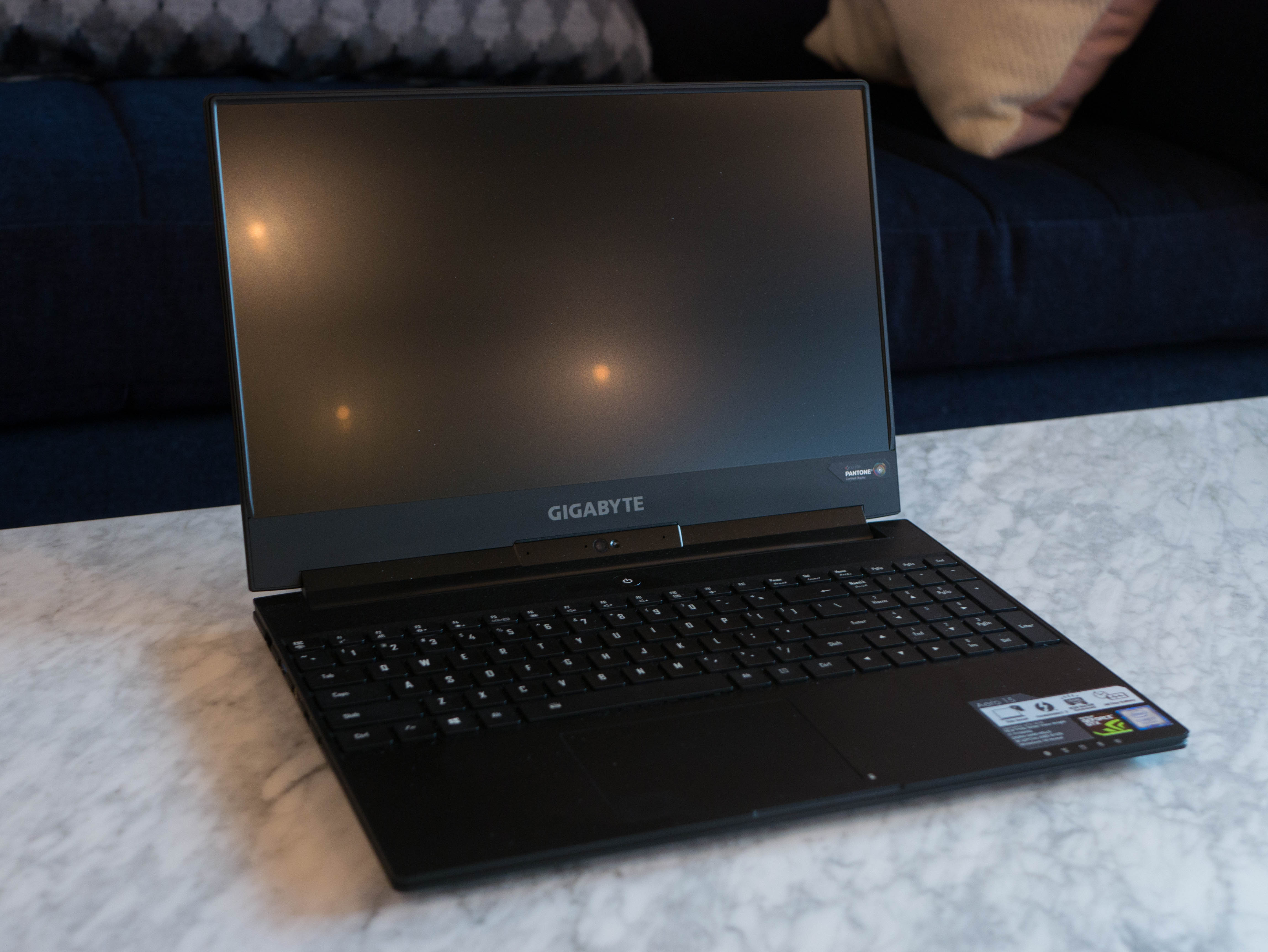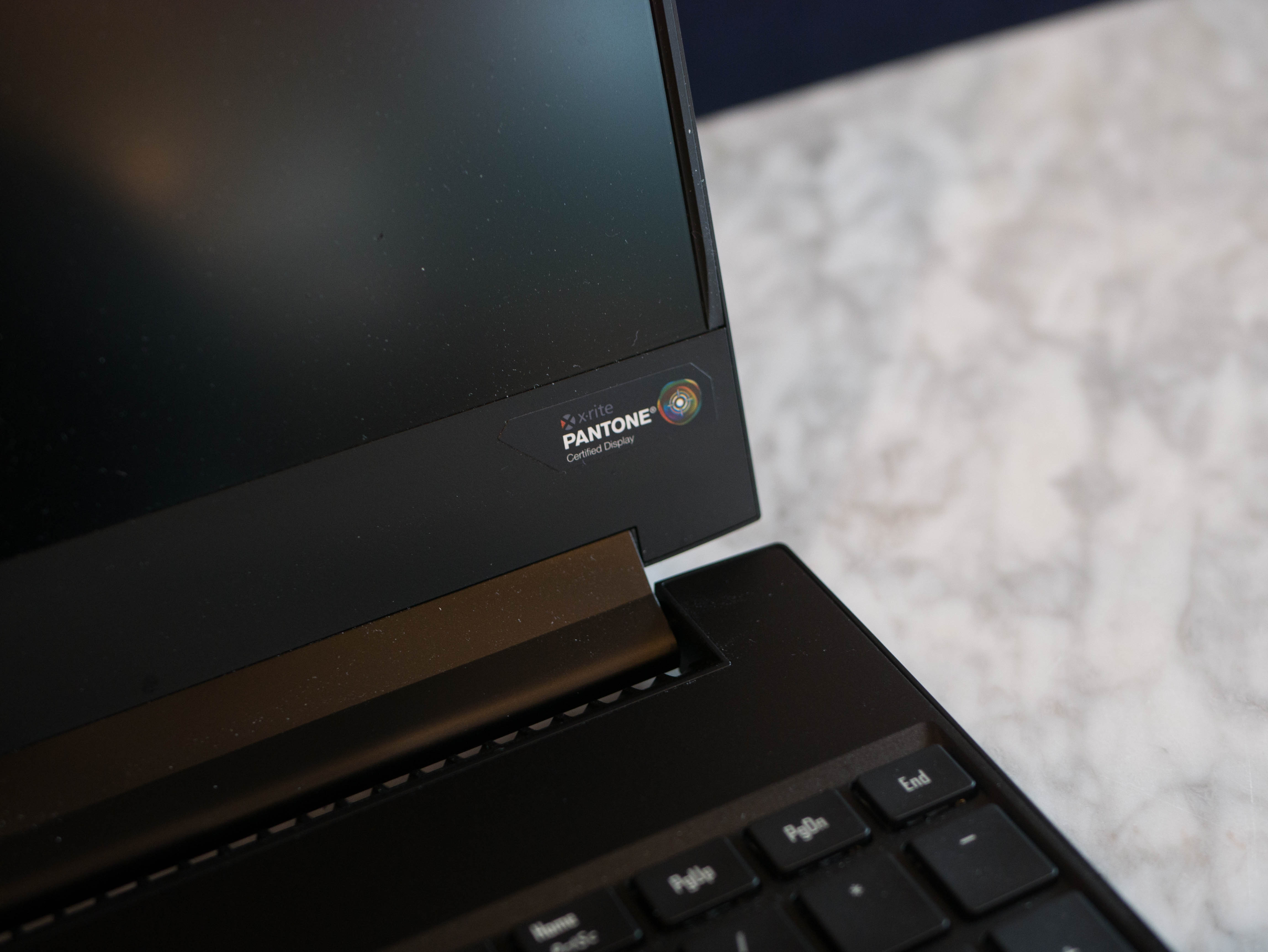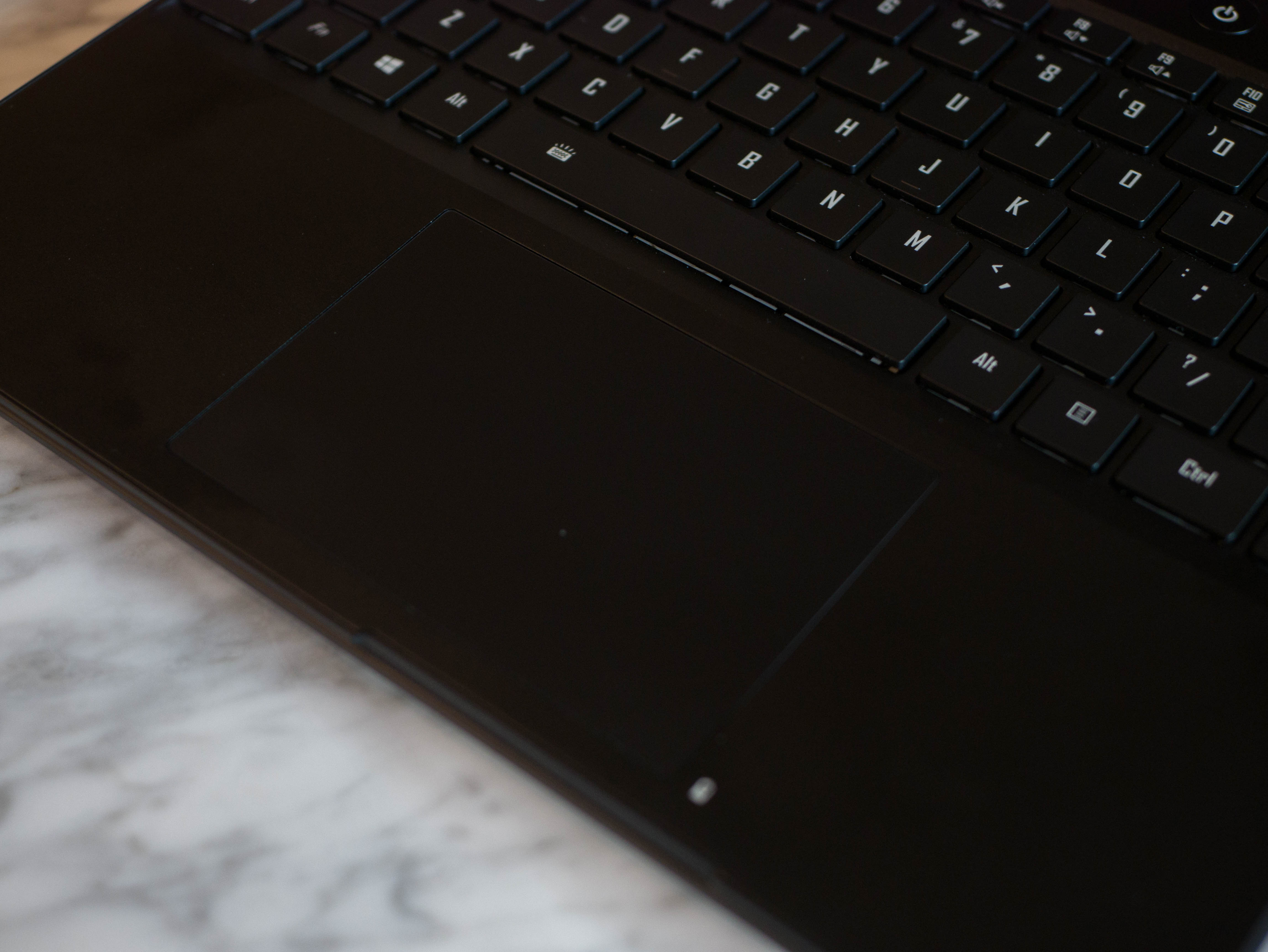Early Verdict
If you want a robust gaming laptop with outstanding battery life, a top-notch display, and excellent performance, look no further than the Aero 15X.
Pros
- +
Robust build quality
- +
Near-perfect display
- +
Outstanding battery life
- +
Great performance
Cons
- -
Somewhat bland aesthetics
- -
Thicker than most Max-Q laptops
- -
60Hz refresh rate
Why you can trust Tom's Hardware
Introduction & Product Tour
Gigabyte's basic-black laptops have never been the flashiest offerings on the gaming laptop market. Rather, the company tends to offer no-nonsense models with ample performance and a decent value proposition.
With Nvidia's Max-Q technology, however, Gigabyte offers a different take on the thin-yet-powerful laptop in the Aero 15X. Taking its Aero line and implementing a Max-Q GPU seems like a no-brainer, but let's see if the chassis meshes well with the reduced power draw.
Packaging

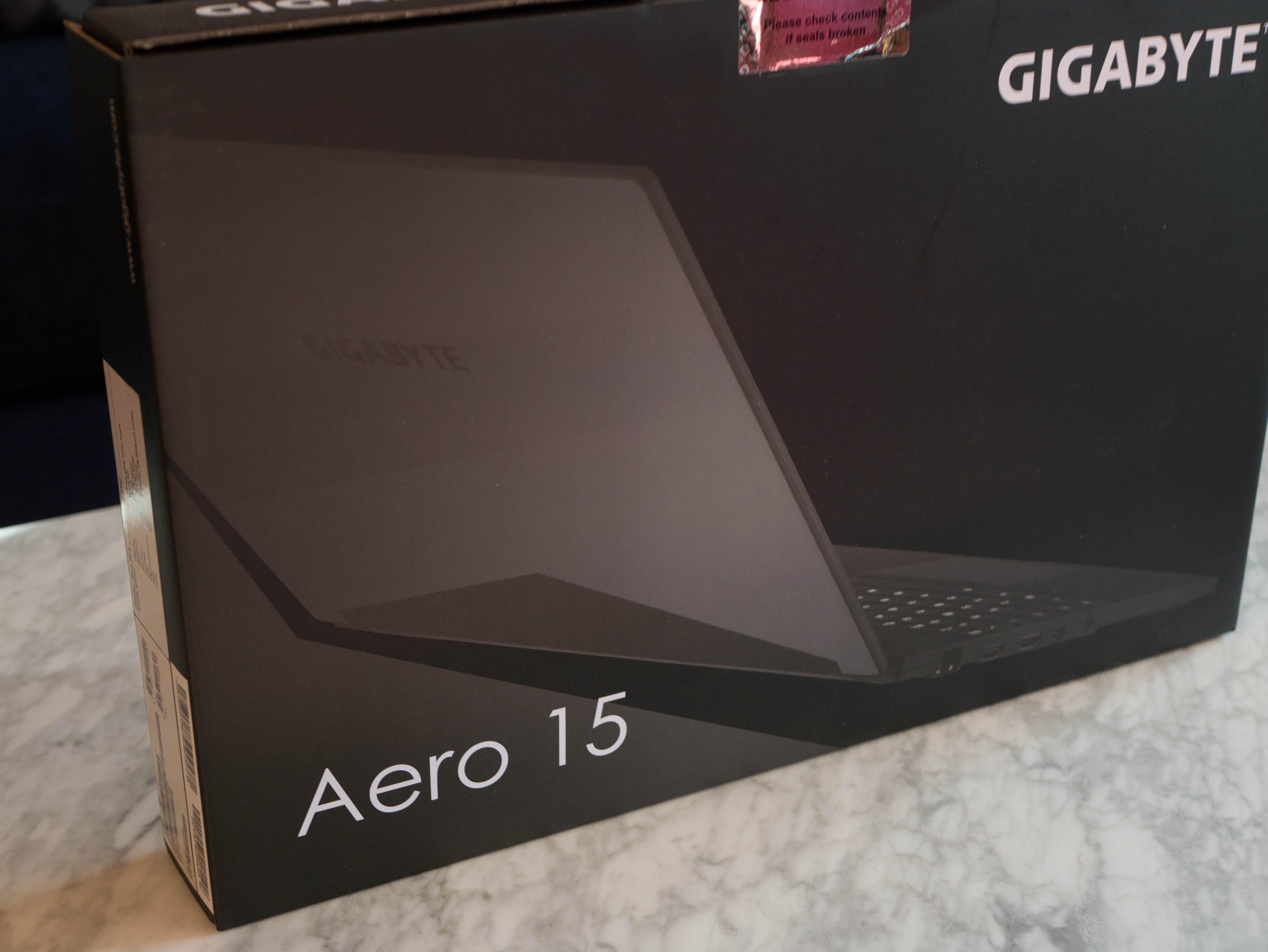

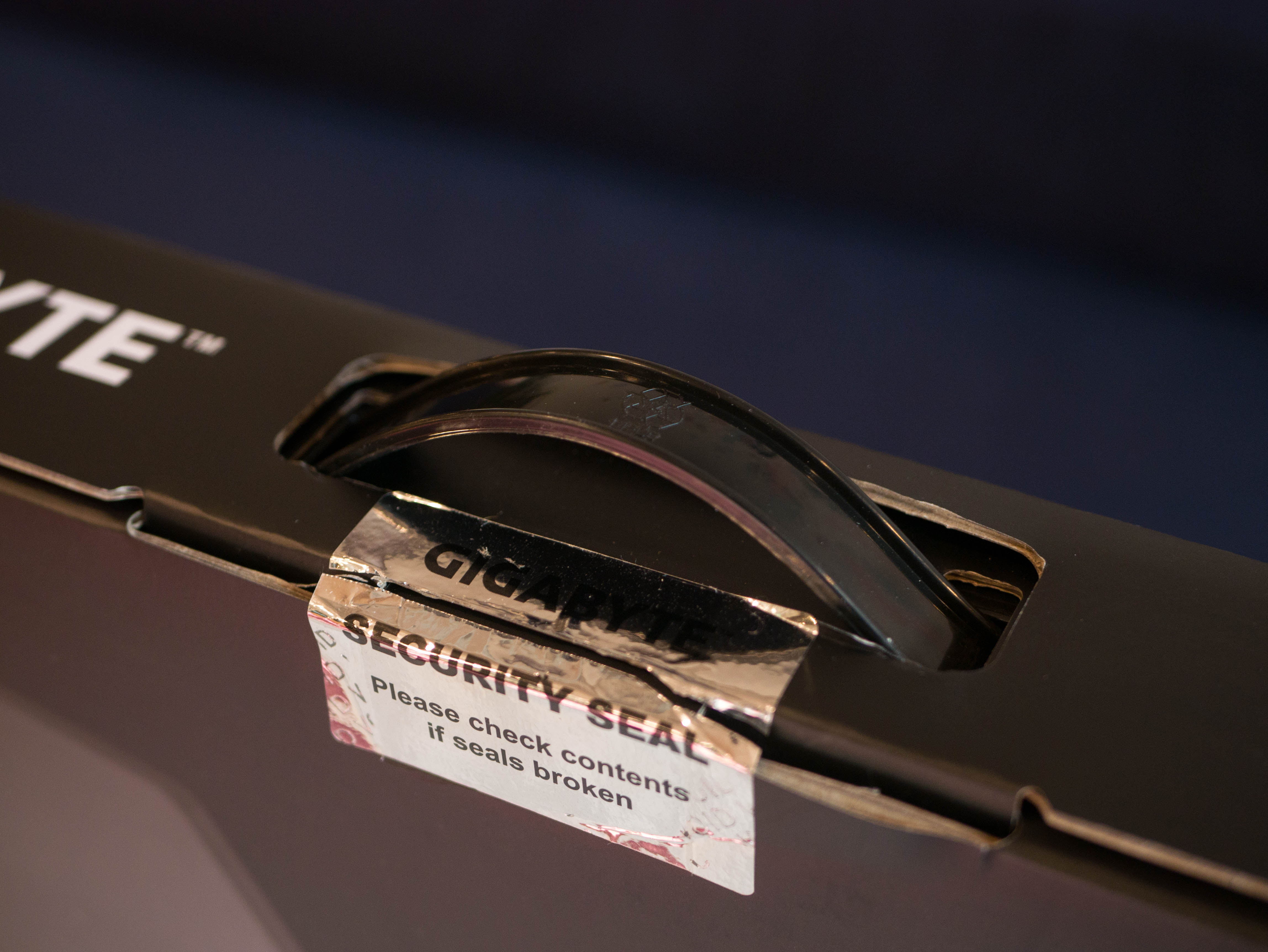
The Gigabyte Aero 15X's box is thin, as you would expect from a lean laptop, and the presentation is straightforward. The box is primarily black, with illustrations of the Aero 15X printed on the front and the back. Various Gigabyte and Aero 15X logos are on just about every corner. A black-plastic handle is on the top edge for easy transport, and it acts as a lock to keep the clamshell box closed.

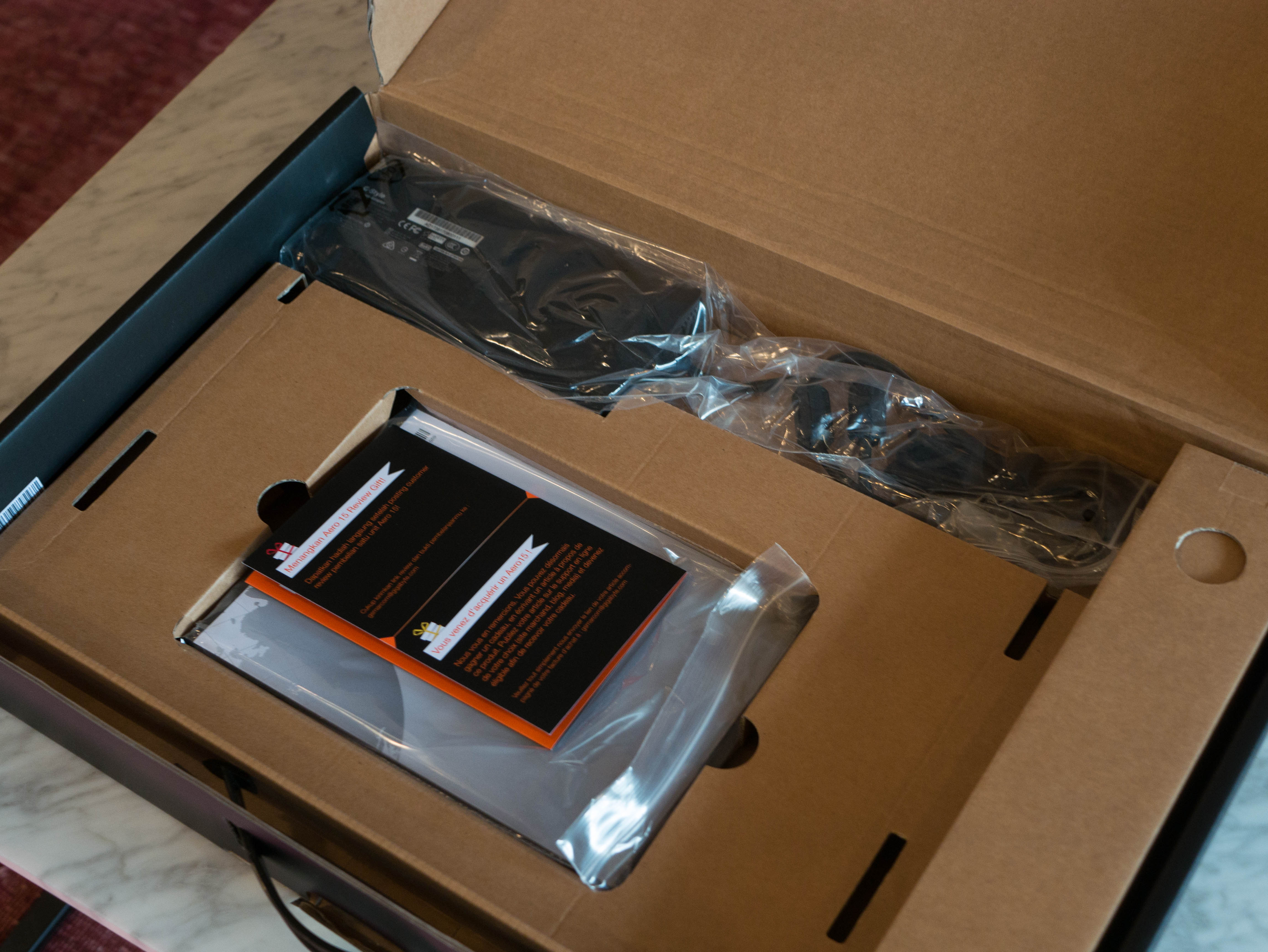
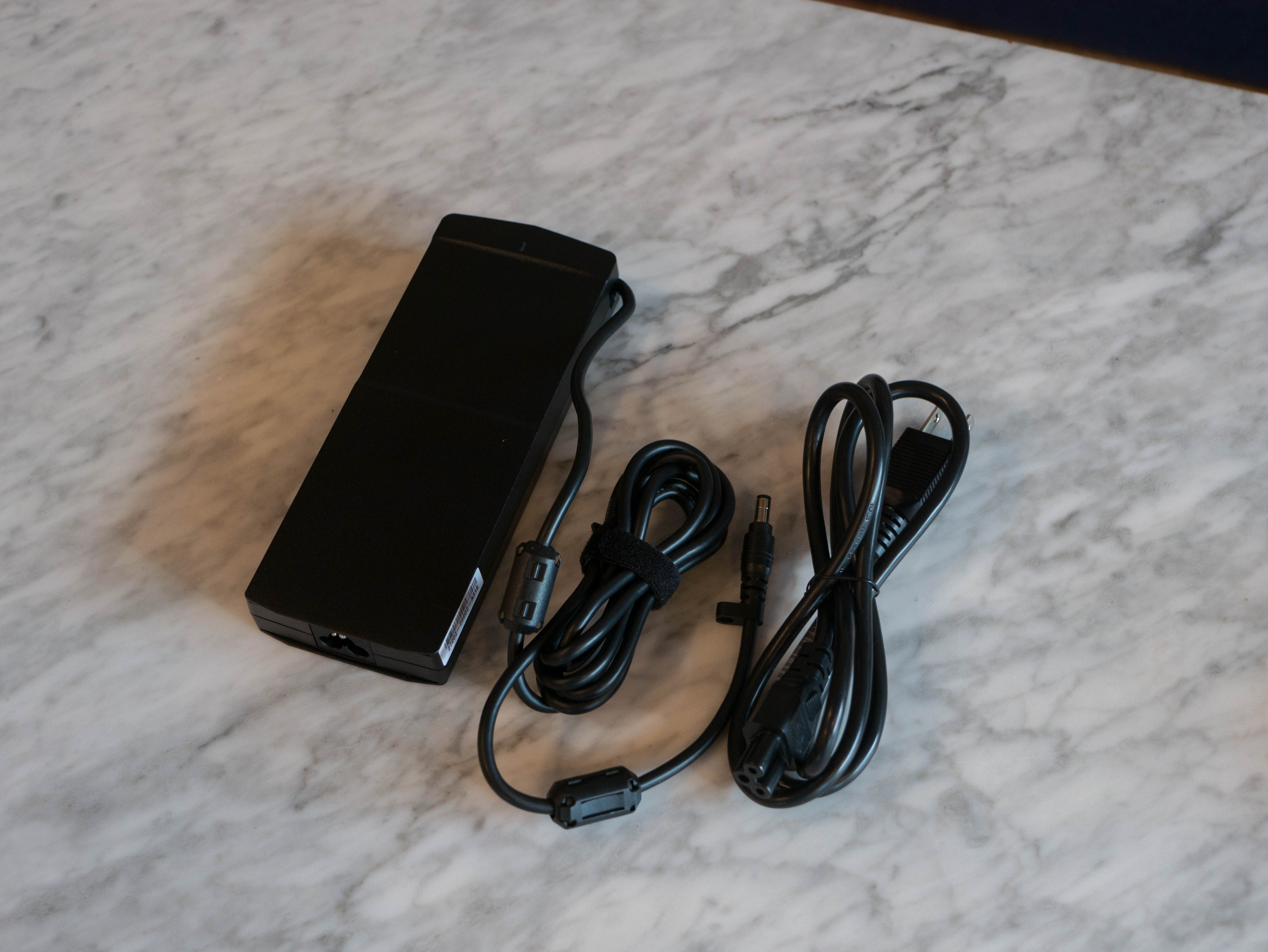

Opening the box presents a clear view of the laptop on the left. When you receive the Aero 15X, it'll be wrapped in black cloth, as well as a plastic covering for additional protection in shipping. Beneath the laptop is a cardboard cover. Removing this will expose compartments for the 200W power supply, a user's manual, a warranty card, and drivers. Additionally, you get the offer of a gift booklet that can be redeemed by writing a review for the Aero 15X. Finally, on the right, you'll find a box holding the AC power cord.
Exterior
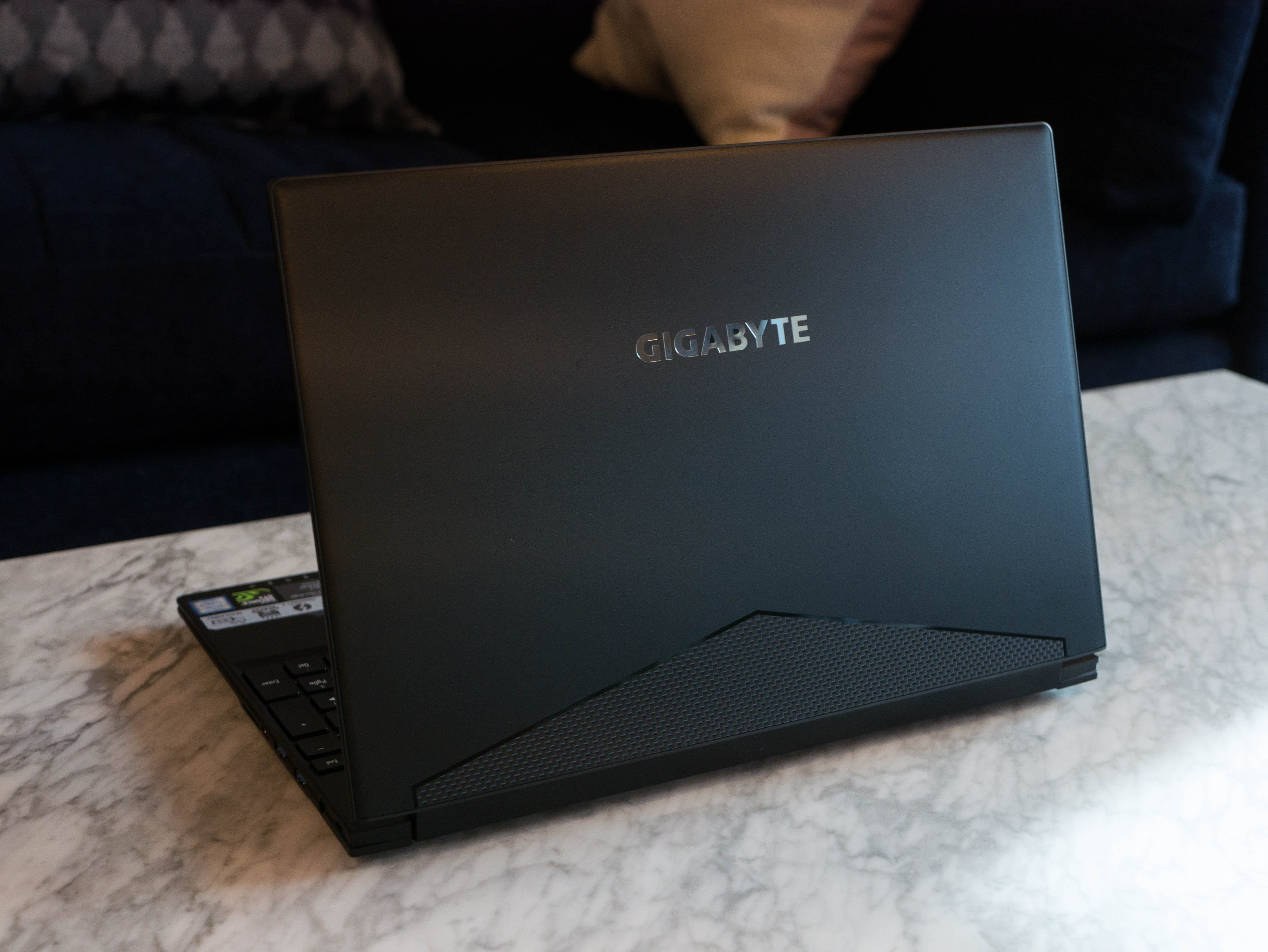
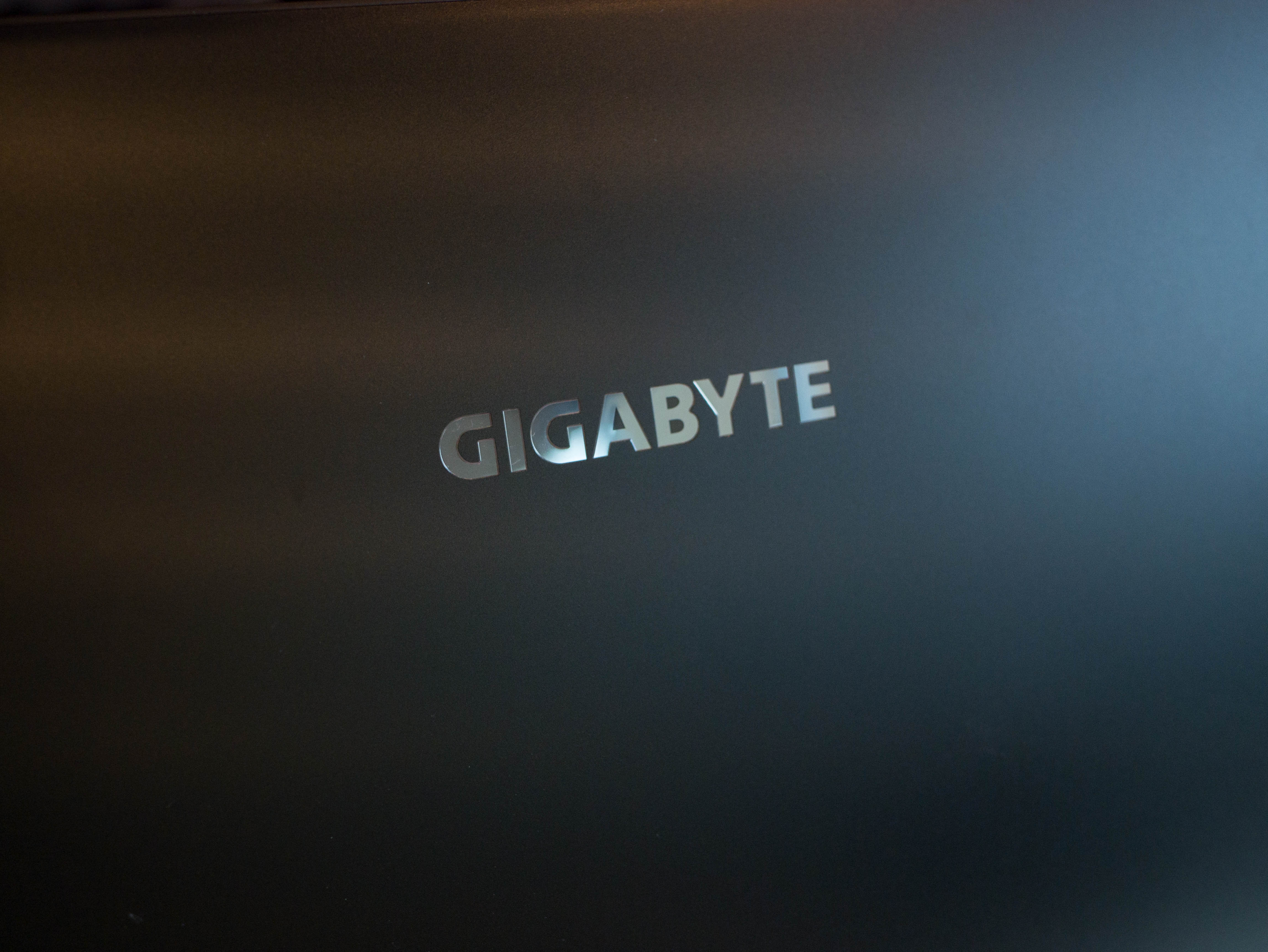

Starting from the top, the Aero 15X's lid is constructed out of aluminum with a matte-black finish. The matte surface provides a sleek-yet-understated aesthetic. A thin (almost unnoticeable, really) plastic border surrounds the lid. The bottom edge of the lid has a carbon-fiber-like pattern etched in a triangular formation, a welcome contrast from the clean slate on top. In the middle is Gigabyte's logo engraved in reflective chrome. The matte aluminum is cool and crisp to the touch, but it will inevitably end up blemished by dirt and oil, so keep a wipe handy. As for rigidity, the lid is robust; it won't flex unless excessive pressure is applied.
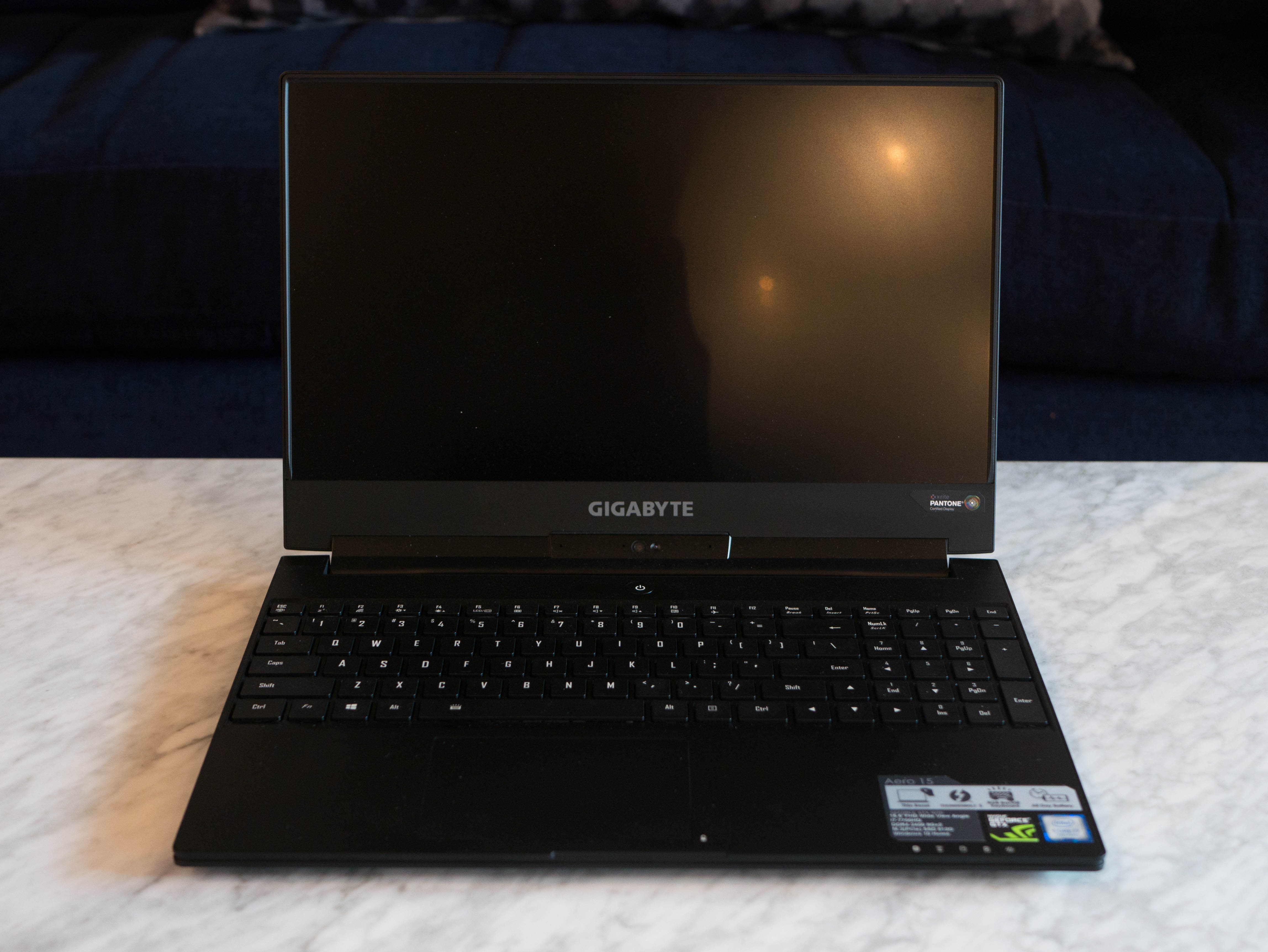
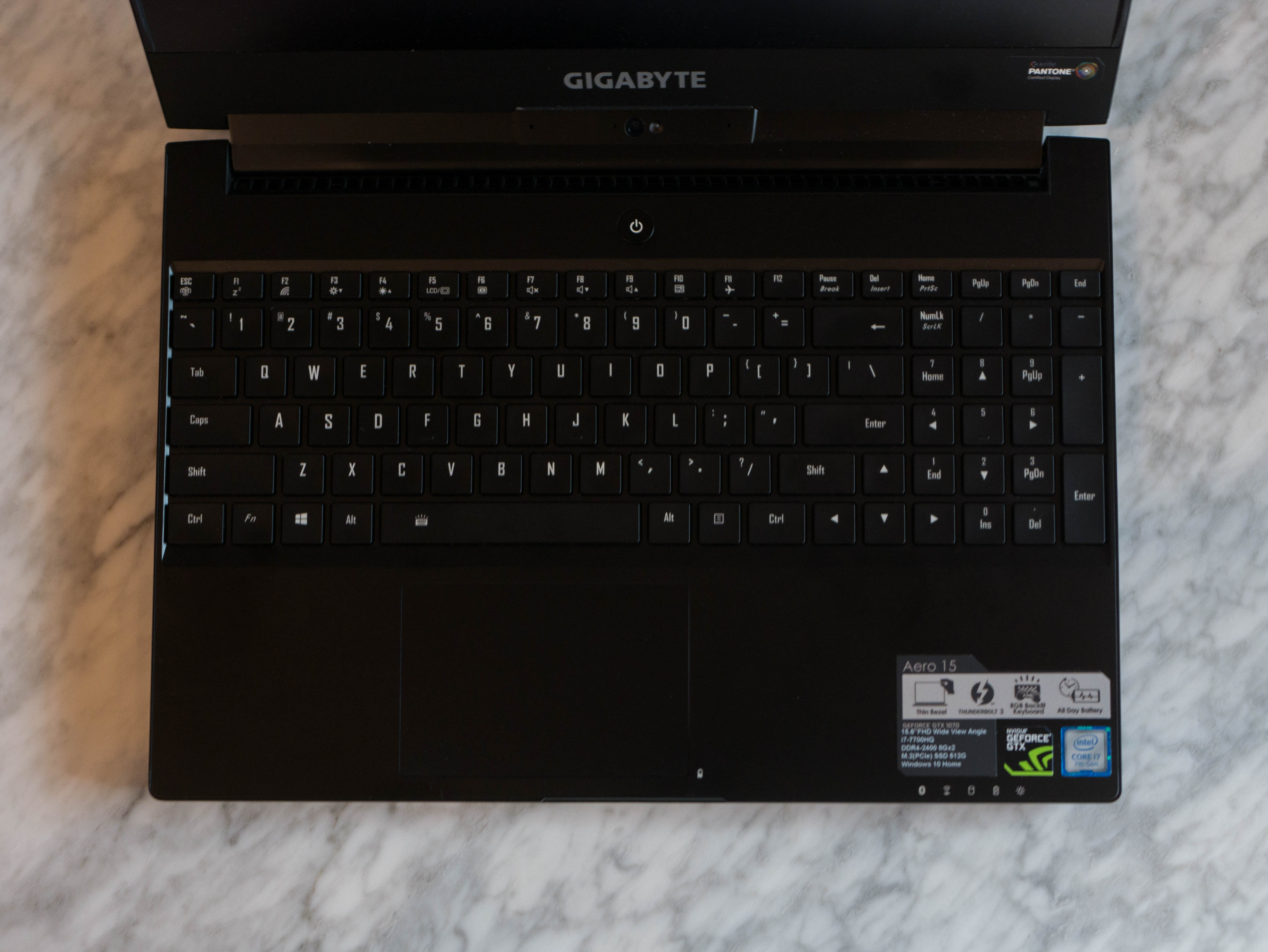
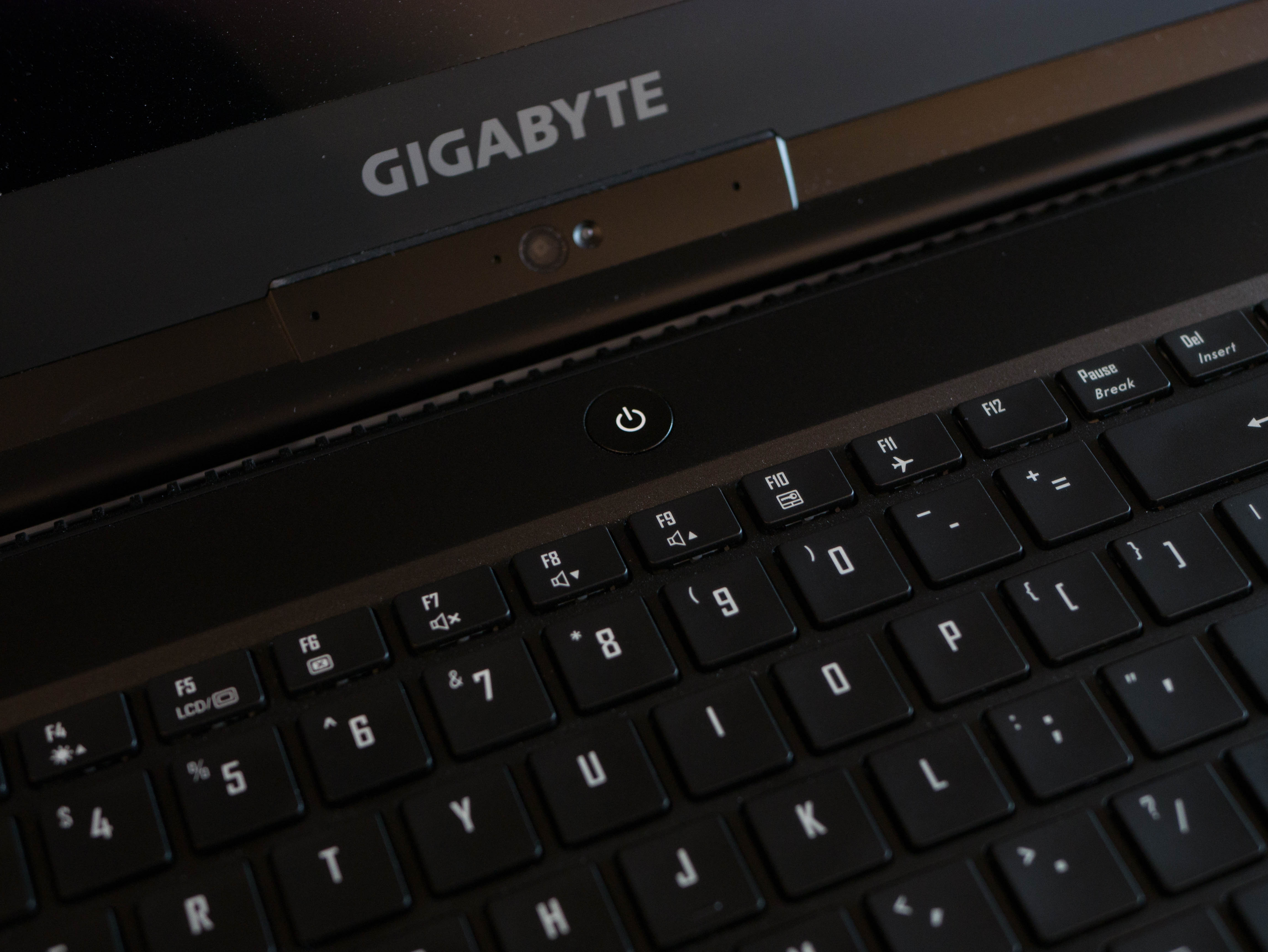
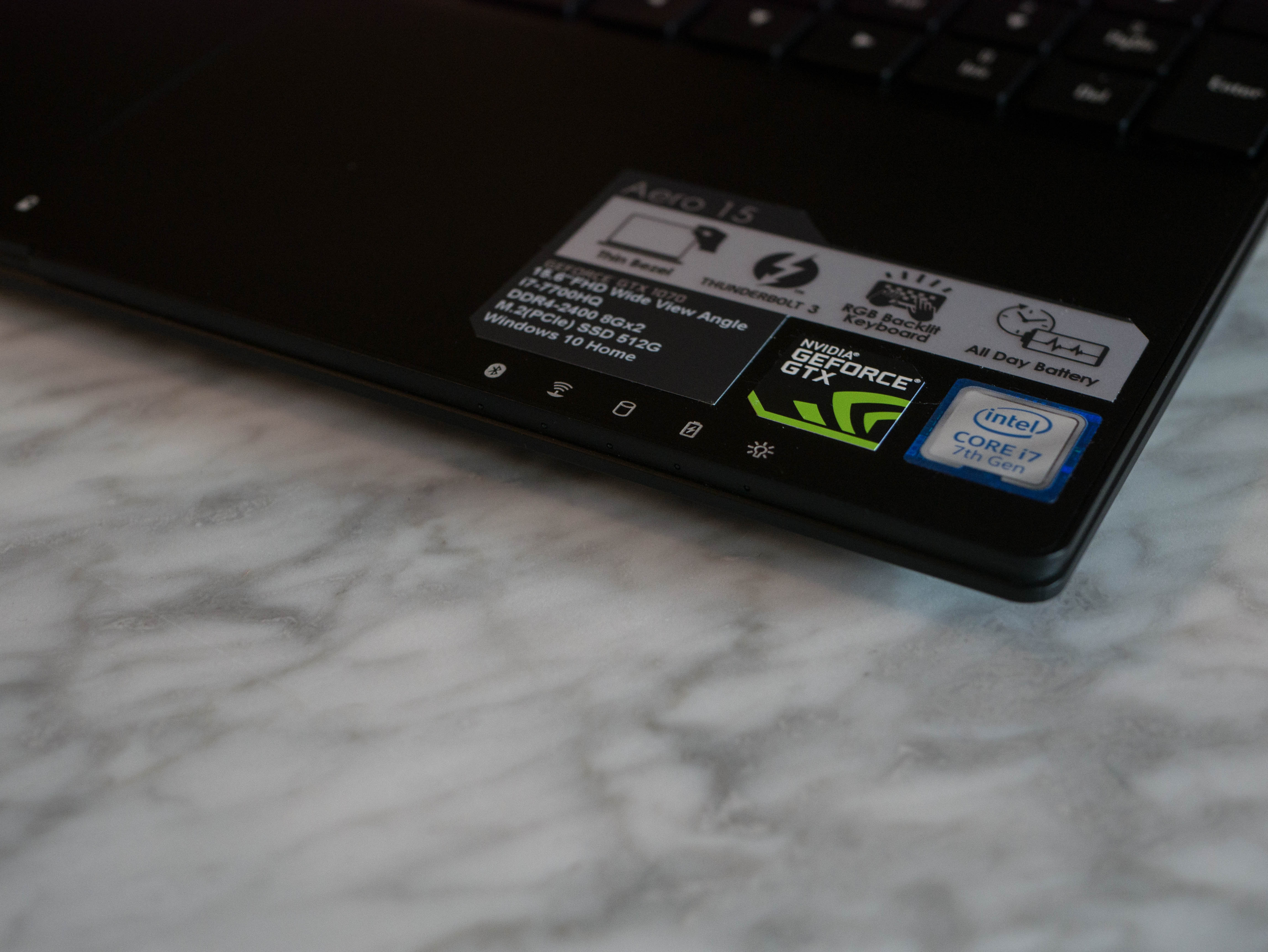
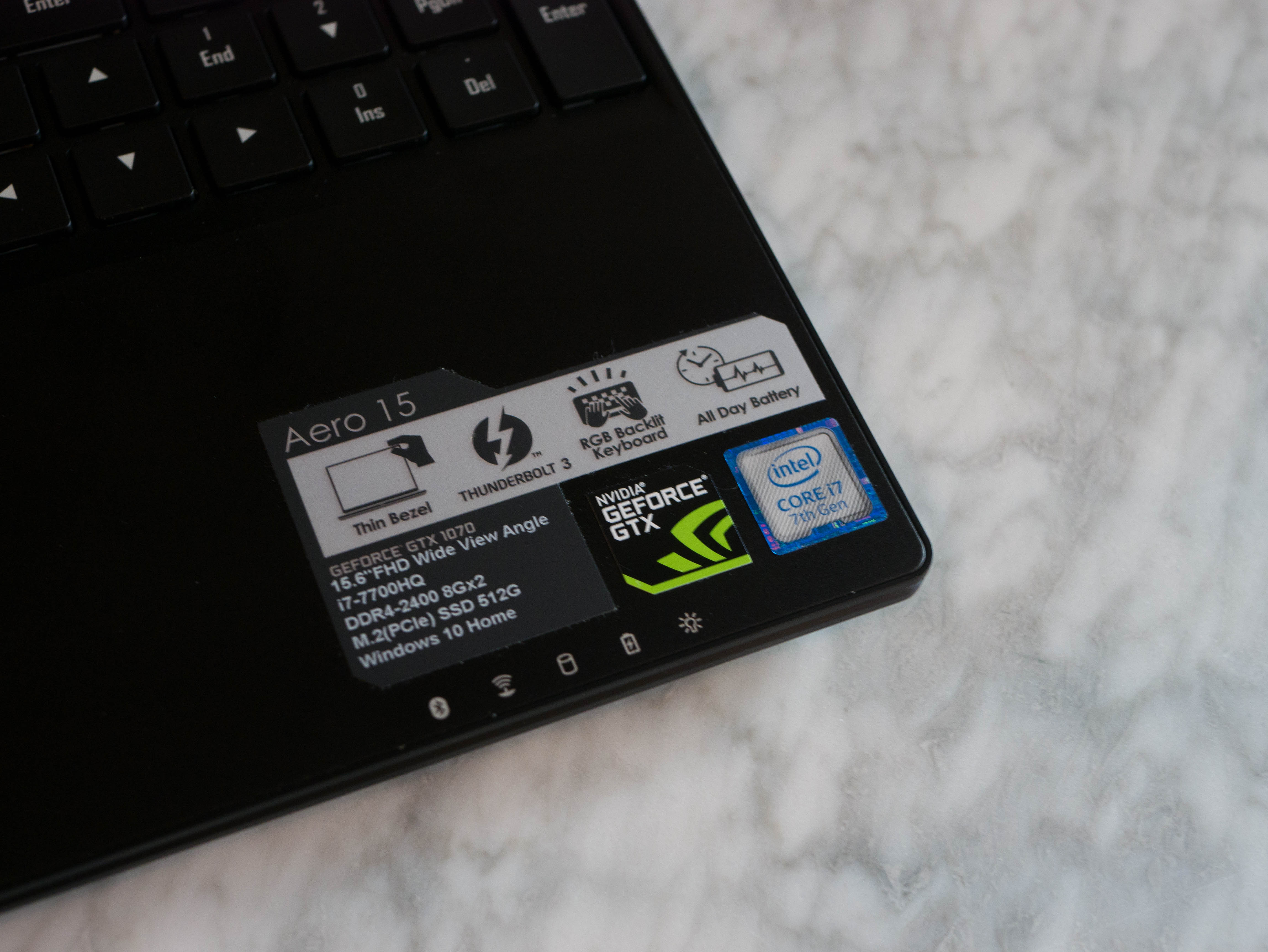
The interior surface provides a similar aesthetic, with more luxurious aluminum to admire. One noteworthy design element is the bezel around the keyboard, which measures less than 0.5mm thick. This provides the Aero 15X a sleek aesthetic that starkly contrasts the overemphasized designs of gaming laptops past. At the top, you'll find a circular power button, which glows white when the system is powered. On the bottom right, you'll find symbols for the LED indicators, representing Bluetooth, Wi-Fi, storage, charging, and power statuses. Gigabyte didn't add much, style-wise, to this surface, and it didn't need to. The aluminum surface and thin keyboard bezels speak for themselves, and any additional changes would have marred the streamlined appearance.
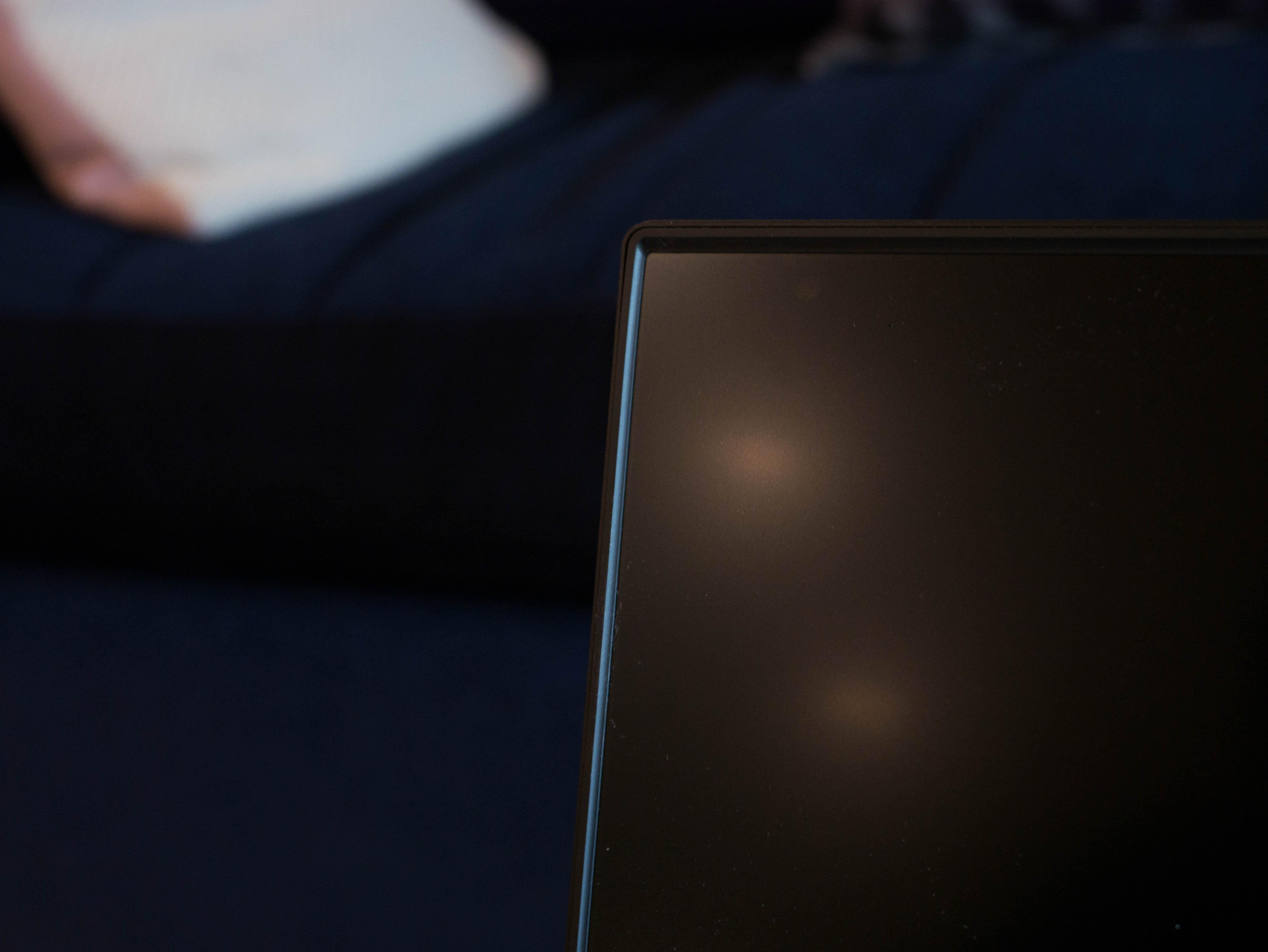

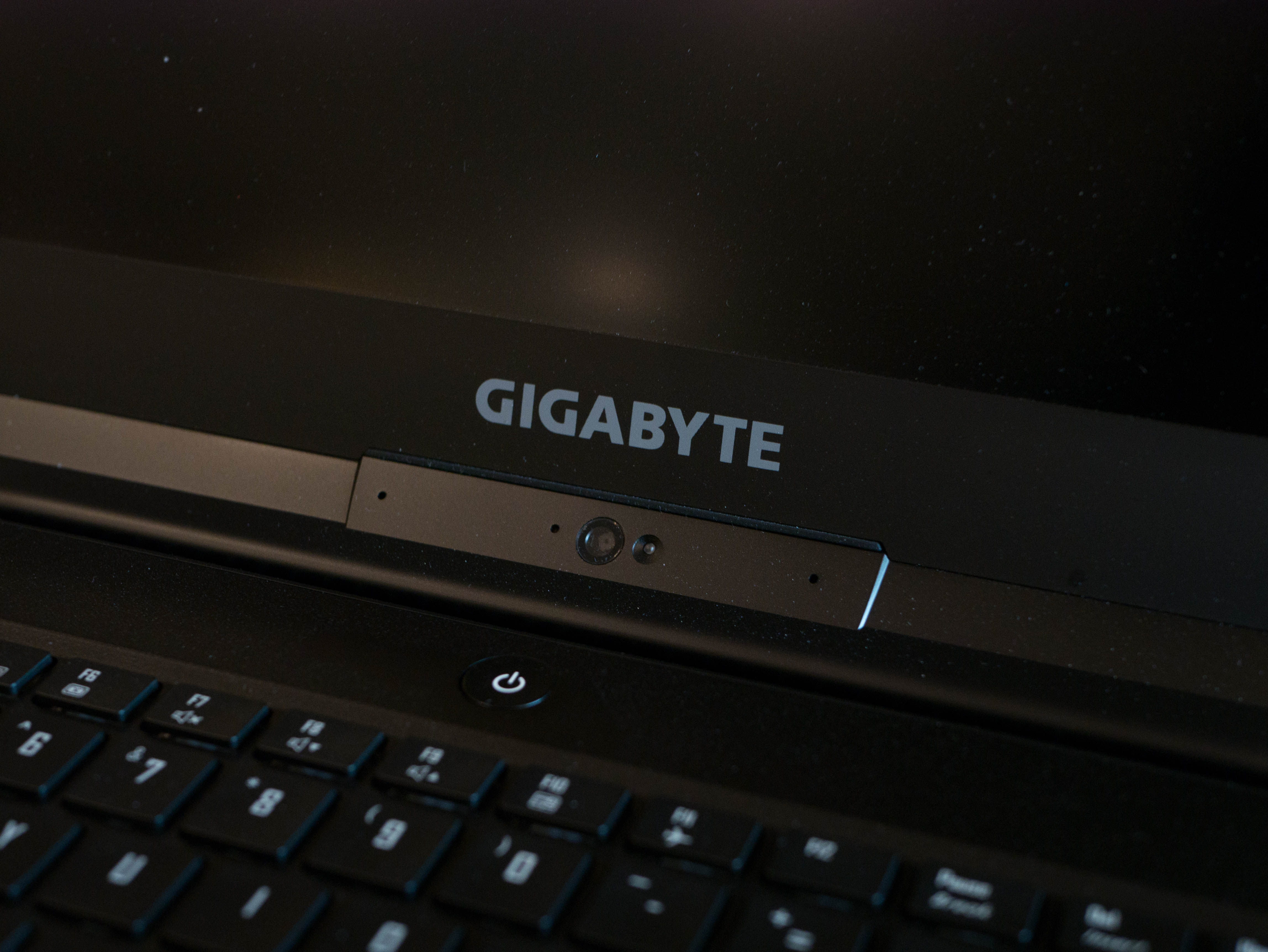
The keyboard bezel isn't the only thin design element. Gigabyte managed to keep the Aero 15X's display bezel thin, as well. The 15.6" display has a 0.25"-thick bezel on the top and sides, the thinnest we've seen from a gaming laptop. Additionally, a rubber lining traces its way around the bezel, acting as a foot to keep the display from touching the keyboard when the lid is closed. The bottom bezel measures 1.6", which is thick as far as bottom bezels go, but this is understandable given the rest of the display. Because of this, the array microphone, the Webcam, and a Webcam indicator LED are housed on the bottom.
Get Tom's Hardware's best news and in-depth reviews, straight to your inbox.
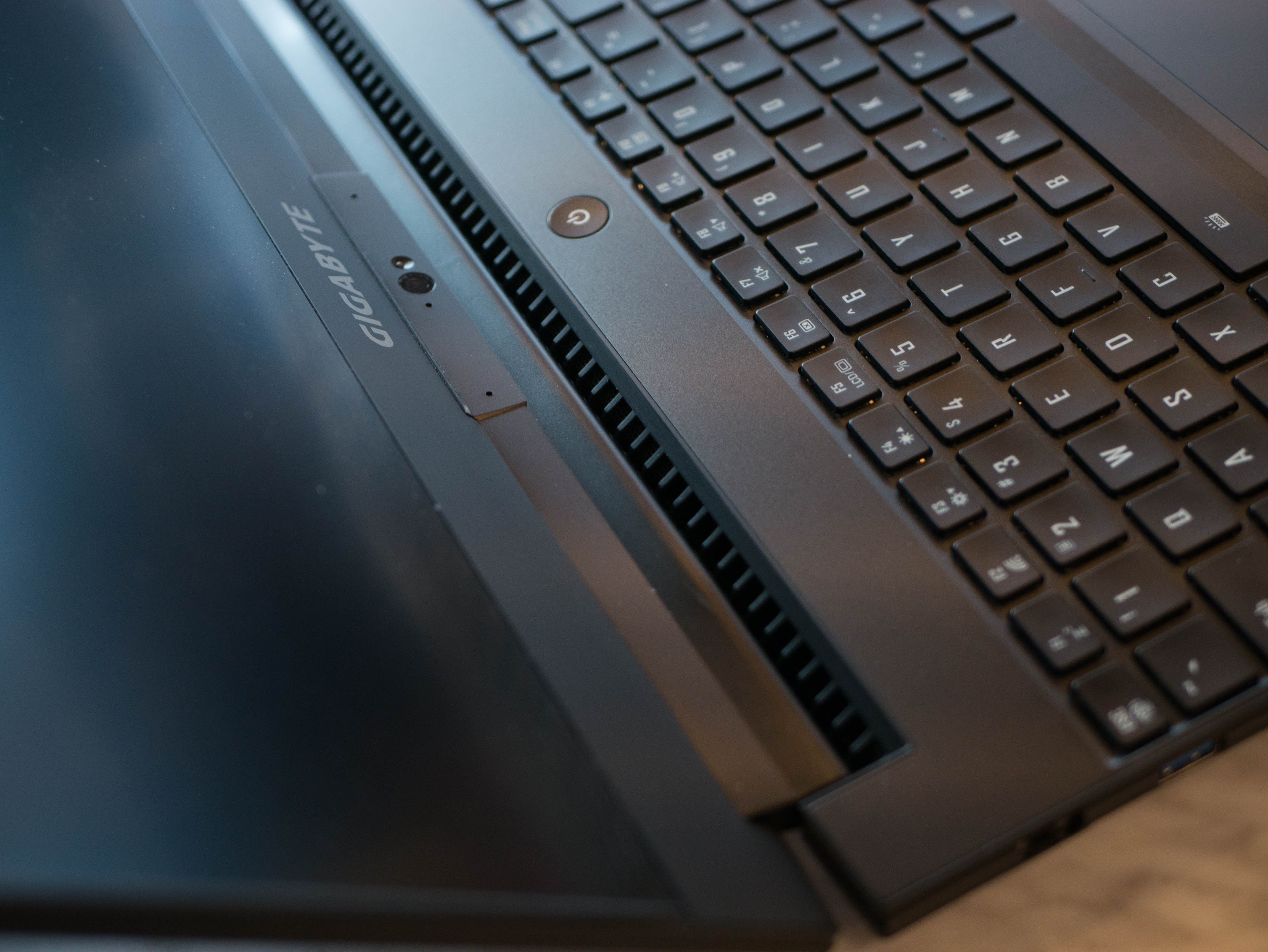
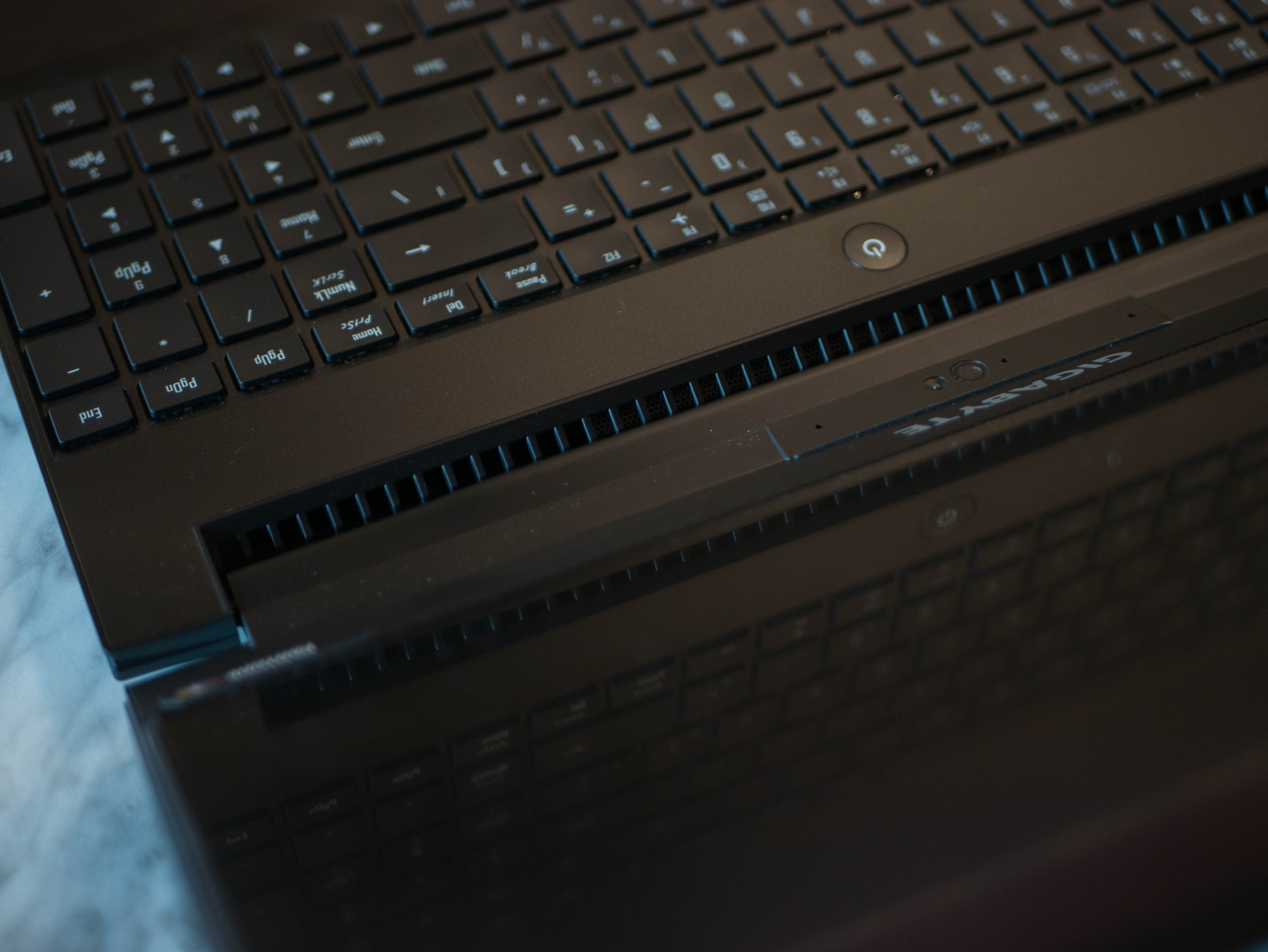
The edges are one of the few elements on the Aero 15X constructed out of plastic. It features a shallow valley running the length of the front and side edges. Additionally, the front edge features a recess that makes touchpad usage more comfortable. If you're wondering where the rear exhaust is situated, look no further than the hinge itself. When the lid is extended, the rear ventilation is exposed. It features a grille-like appearance and has a dotted mesh to allow air to escape while keeping dust out.
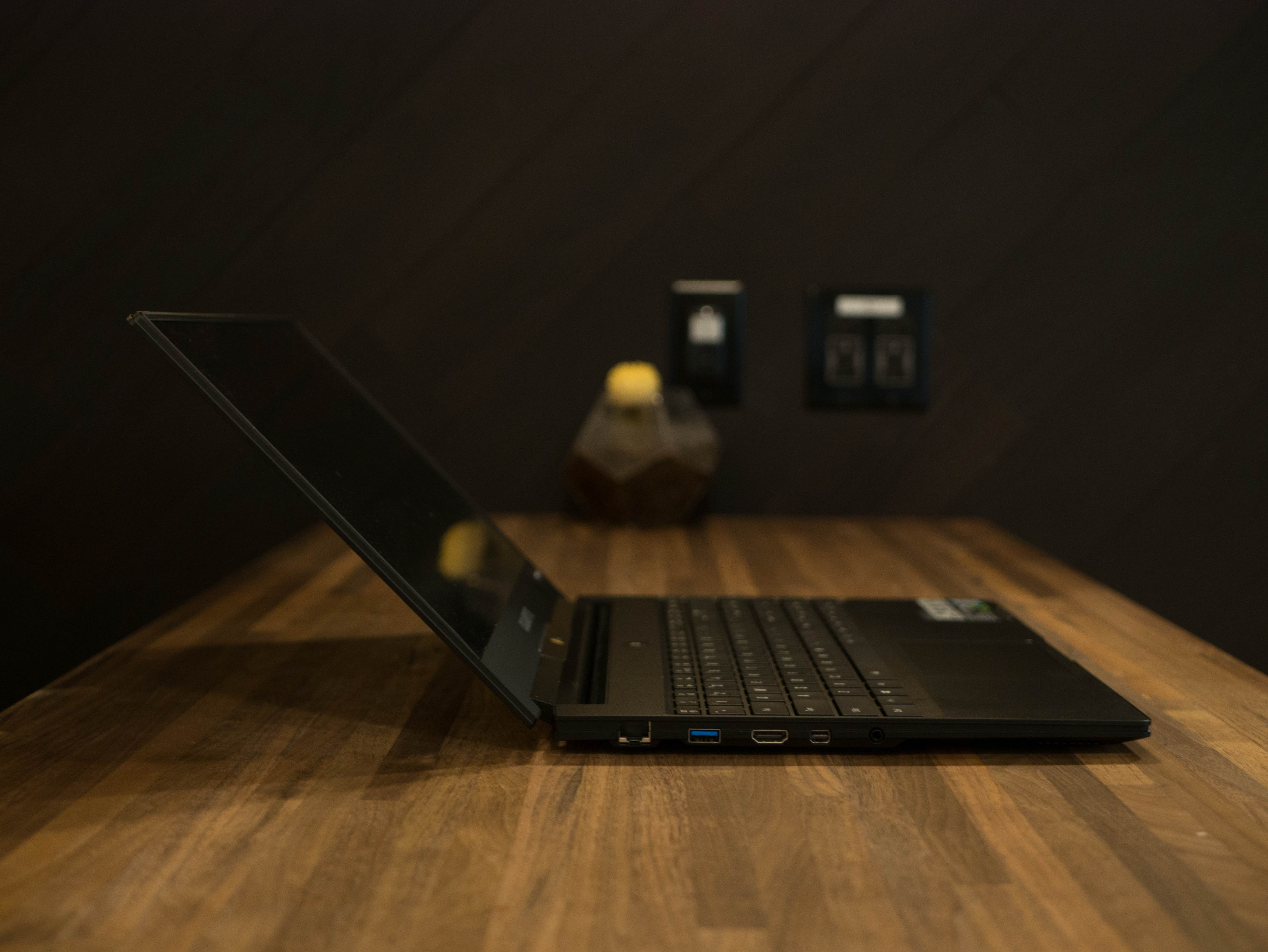
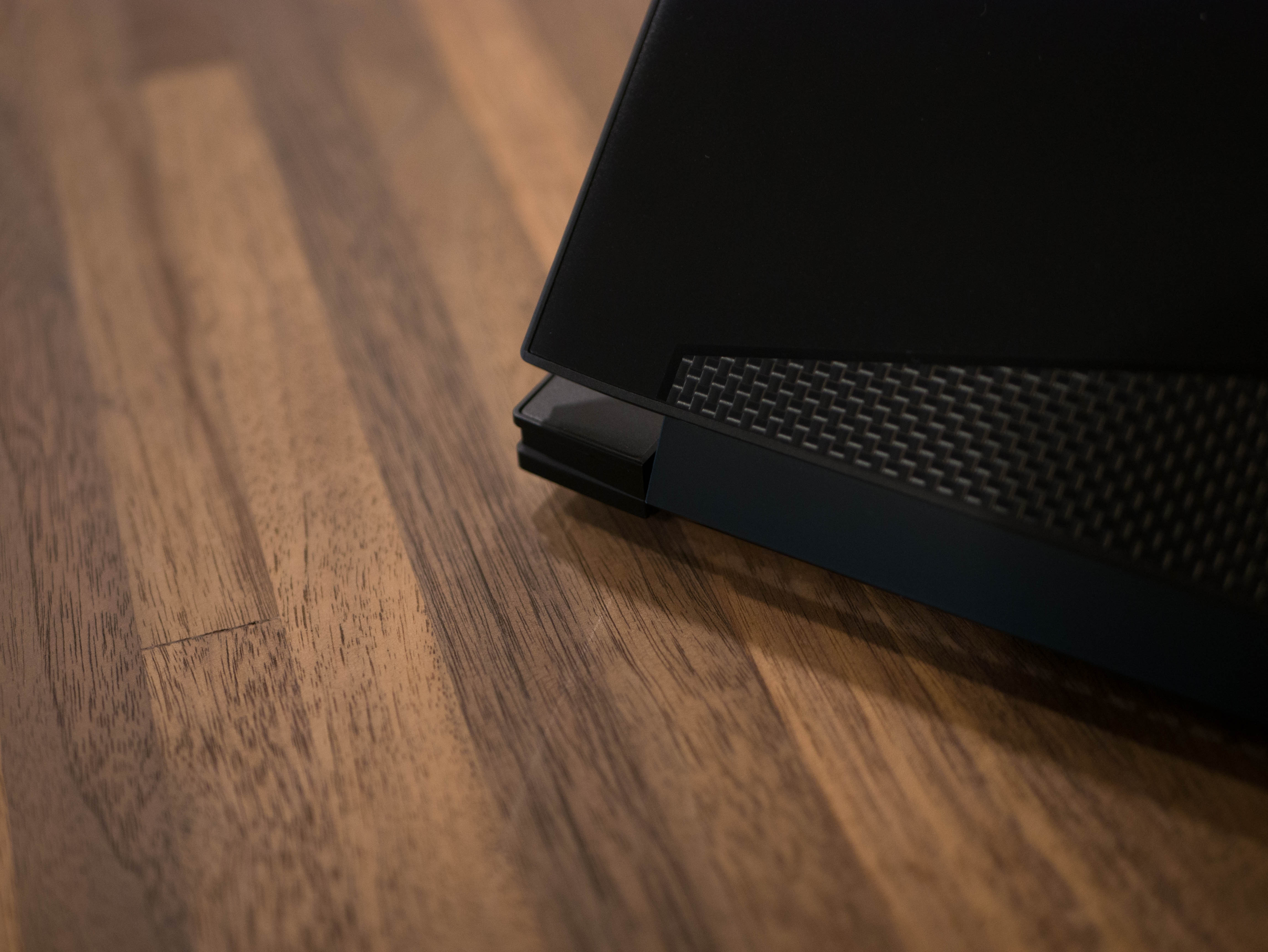
The hinge assembly itself is nothing special. It spans the entire width of the laptop in one plastic strip. It provides the display around 135° of extension and offers smooth movement without being too loose or too tight.
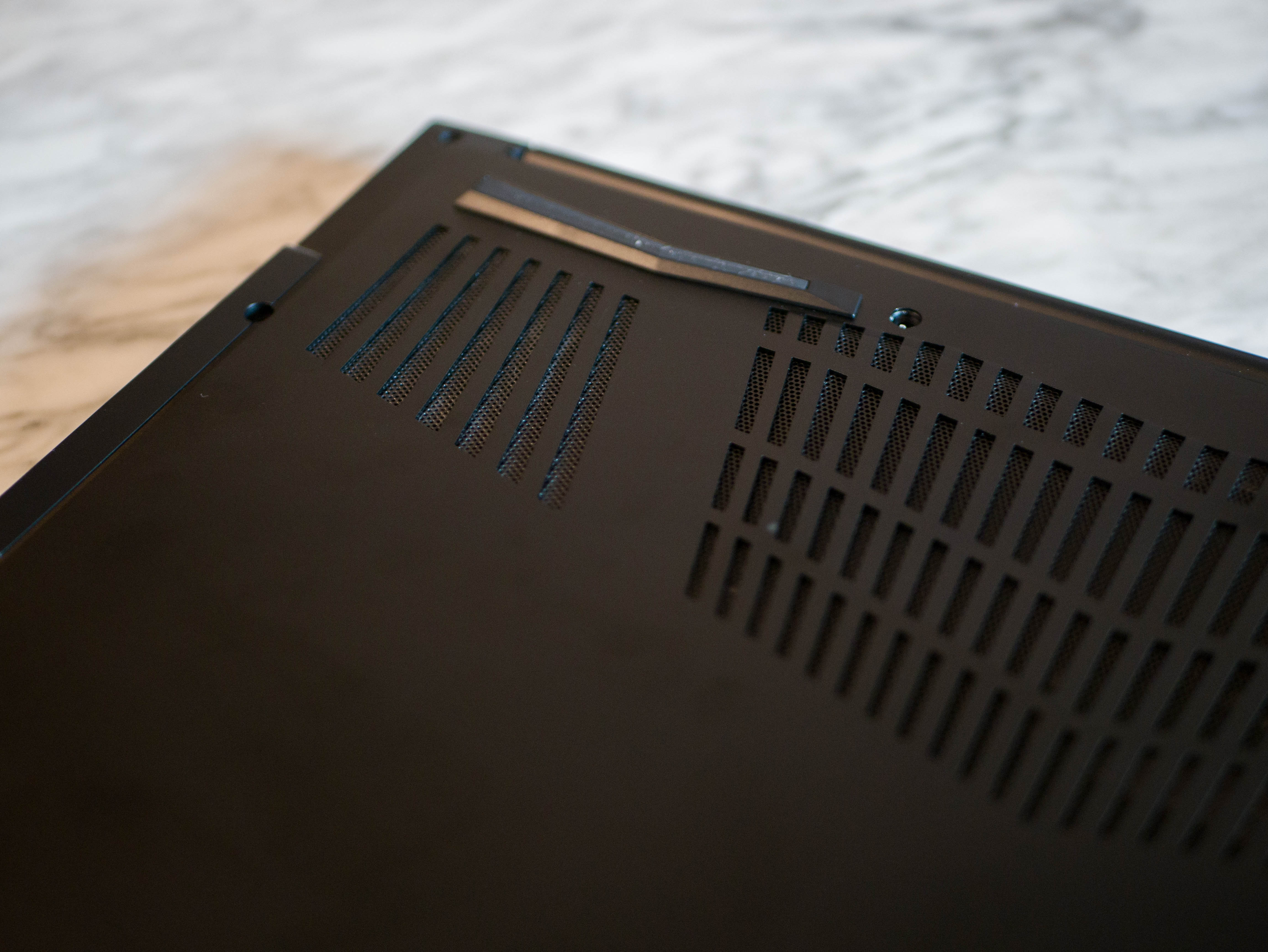
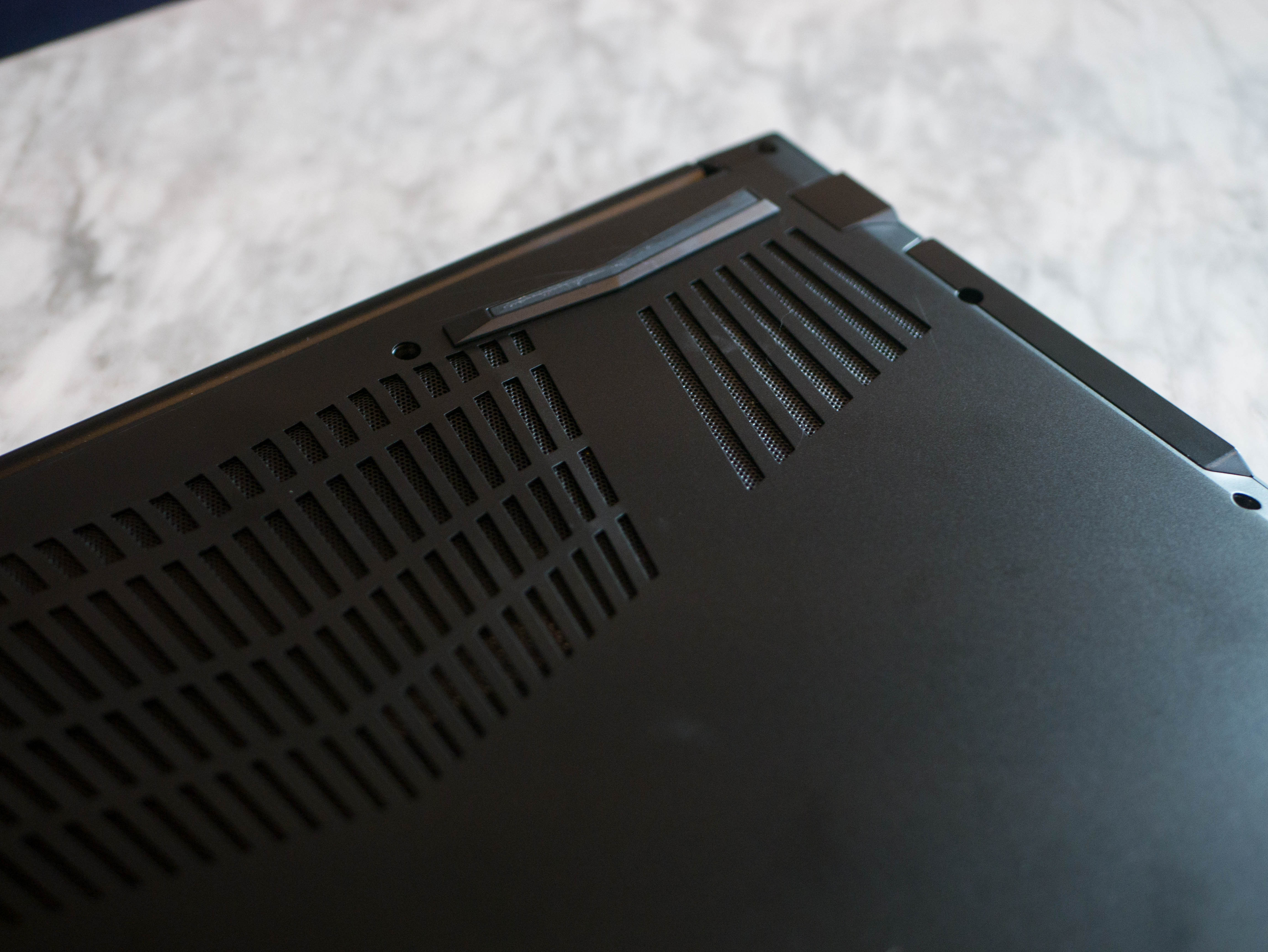
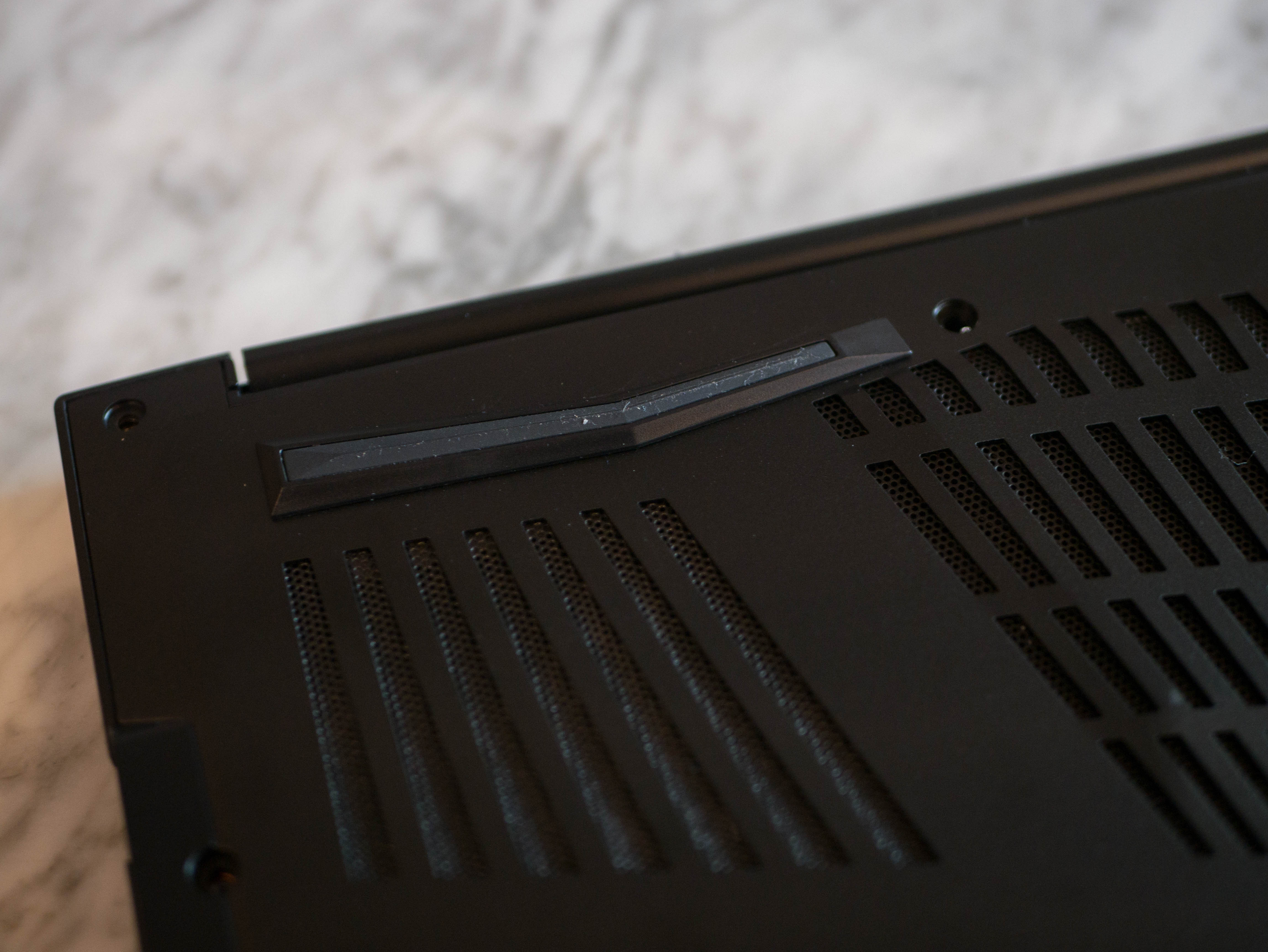
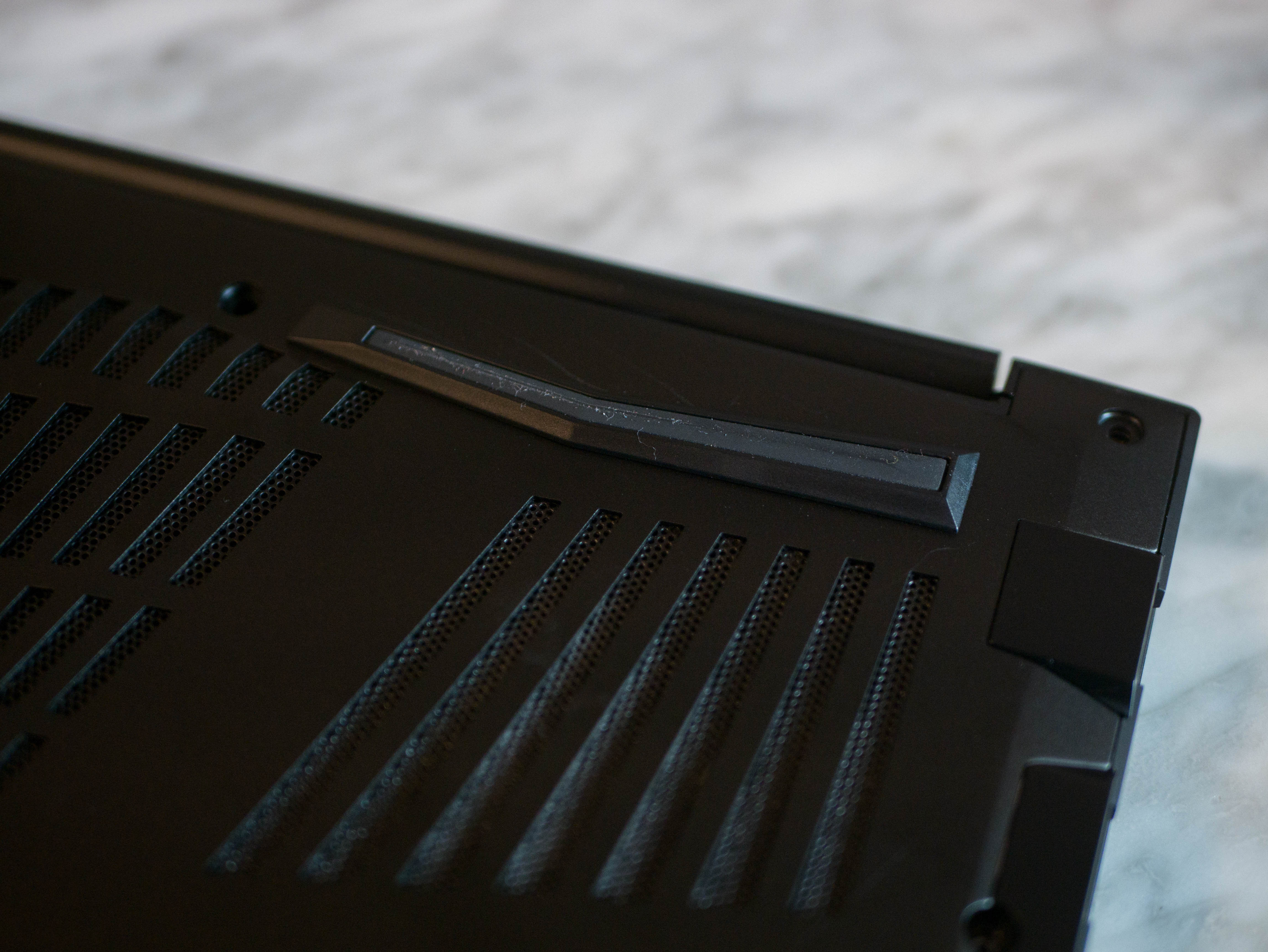
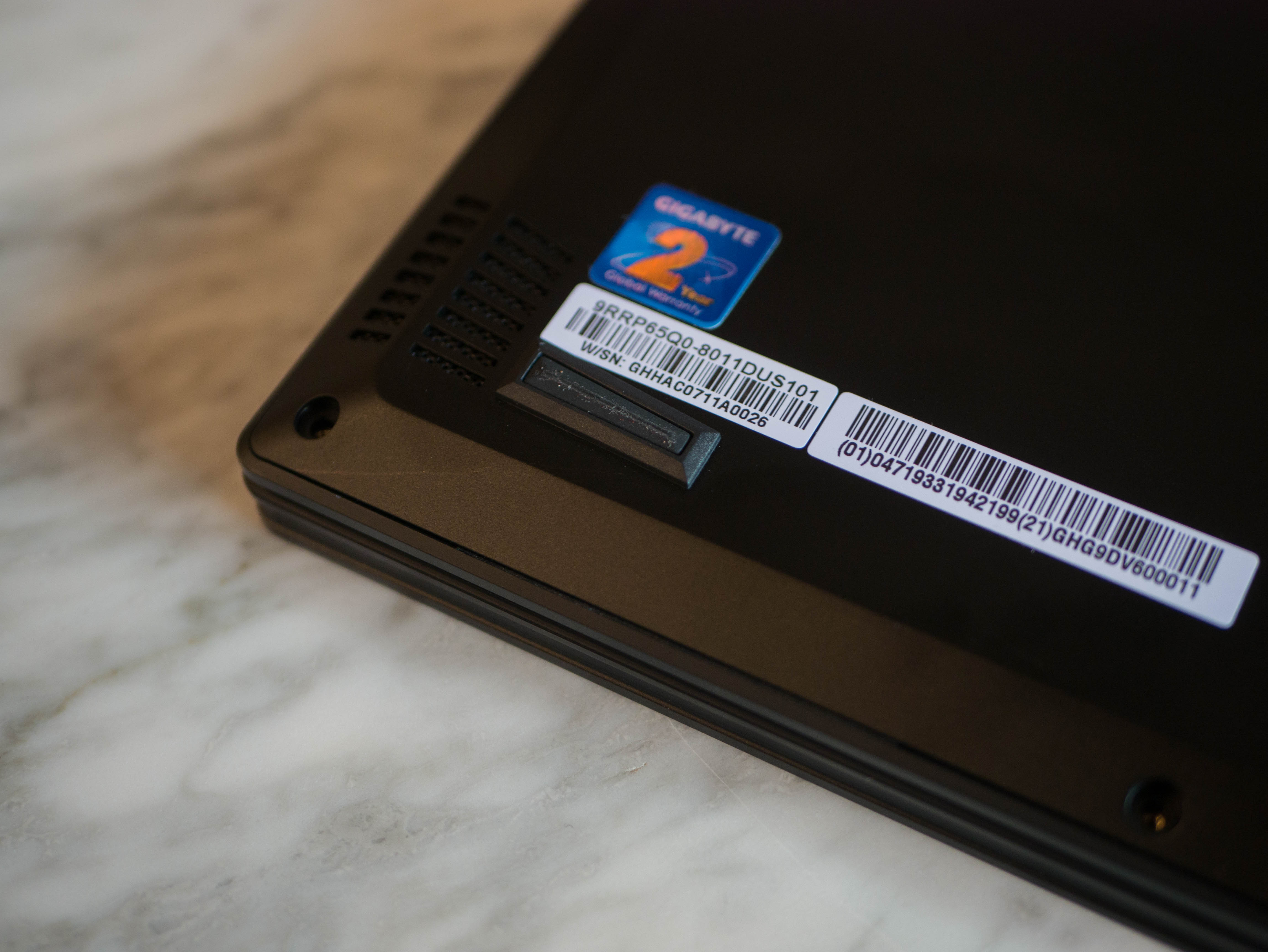
Just like the lid and the interior surface, the bottom panel is constructed of aluminum. It features a much bolder design, unlike the upward-facing surfaces, thanks to its numerous air-intake cutouts. Two sets of cutouts are situated on each side of the Aero 15X for the CPU and GPU fans. An additional wider set of cutouts is located in the middle to cool the motherboard. Behind the grilles, you'll find a metal mesh similar to that of the rear exhaust behind the hinge. Also, five rubber feet down here keep the Aero 15X stable: two long ones on the rear, and three smalls near the front.
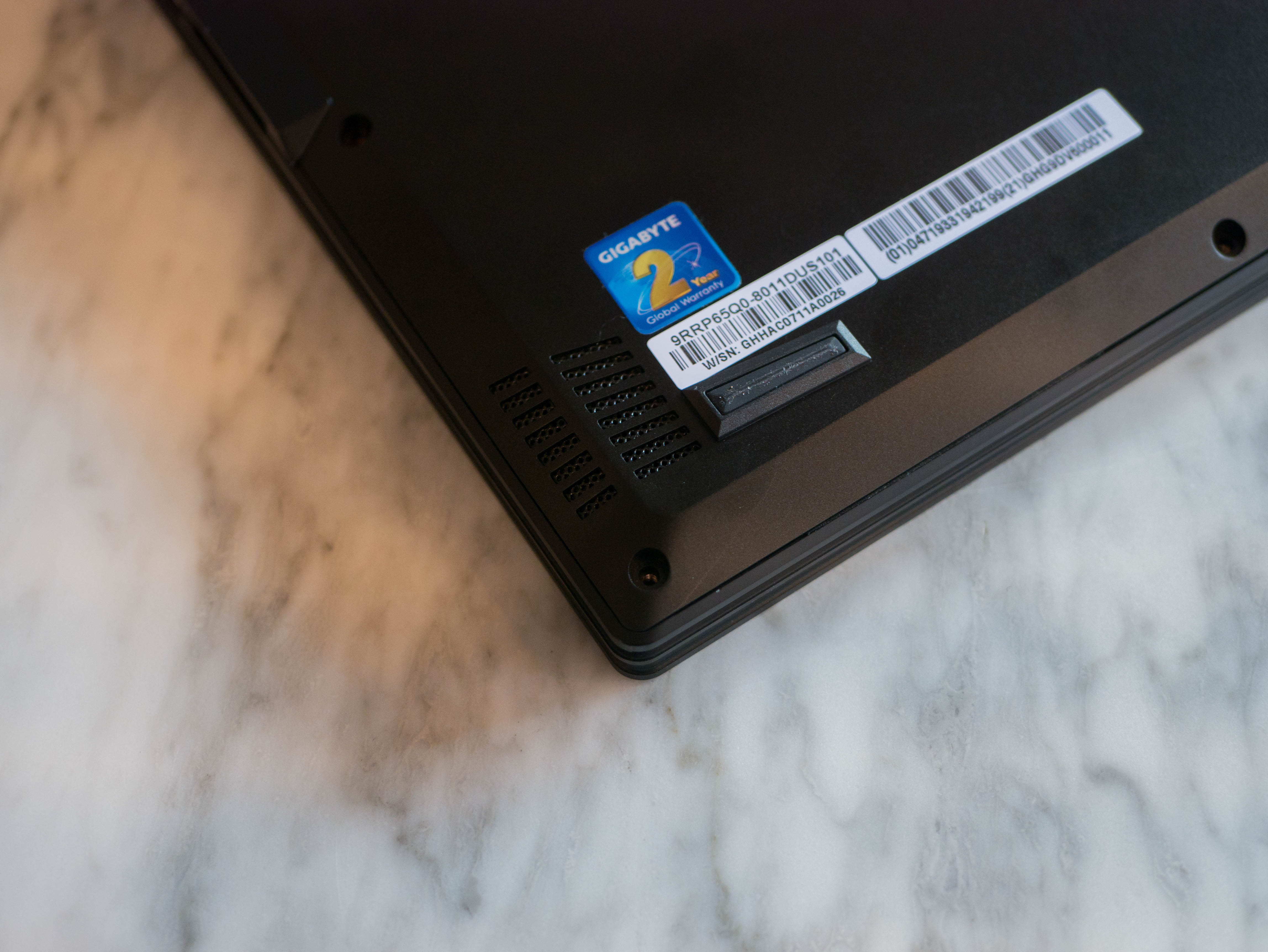
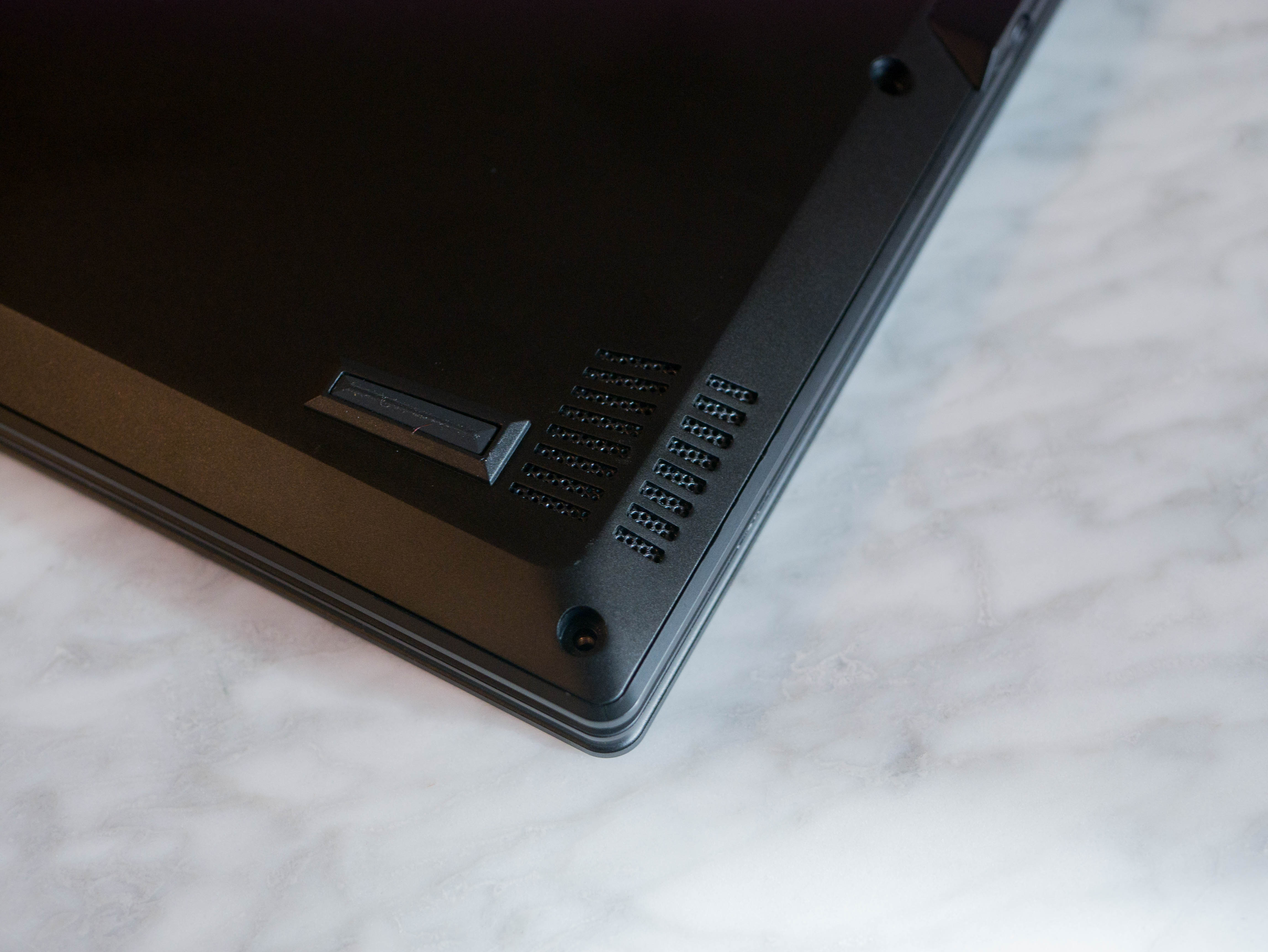
The Aero 15X's speakers are bottom-facing, which is unfortunate because the speakers themselves don't sound bad. Bottom-facing speakers muffle the sound, and a better placement would have been on the interior surface. All things considered, though, this is a minor gripe.
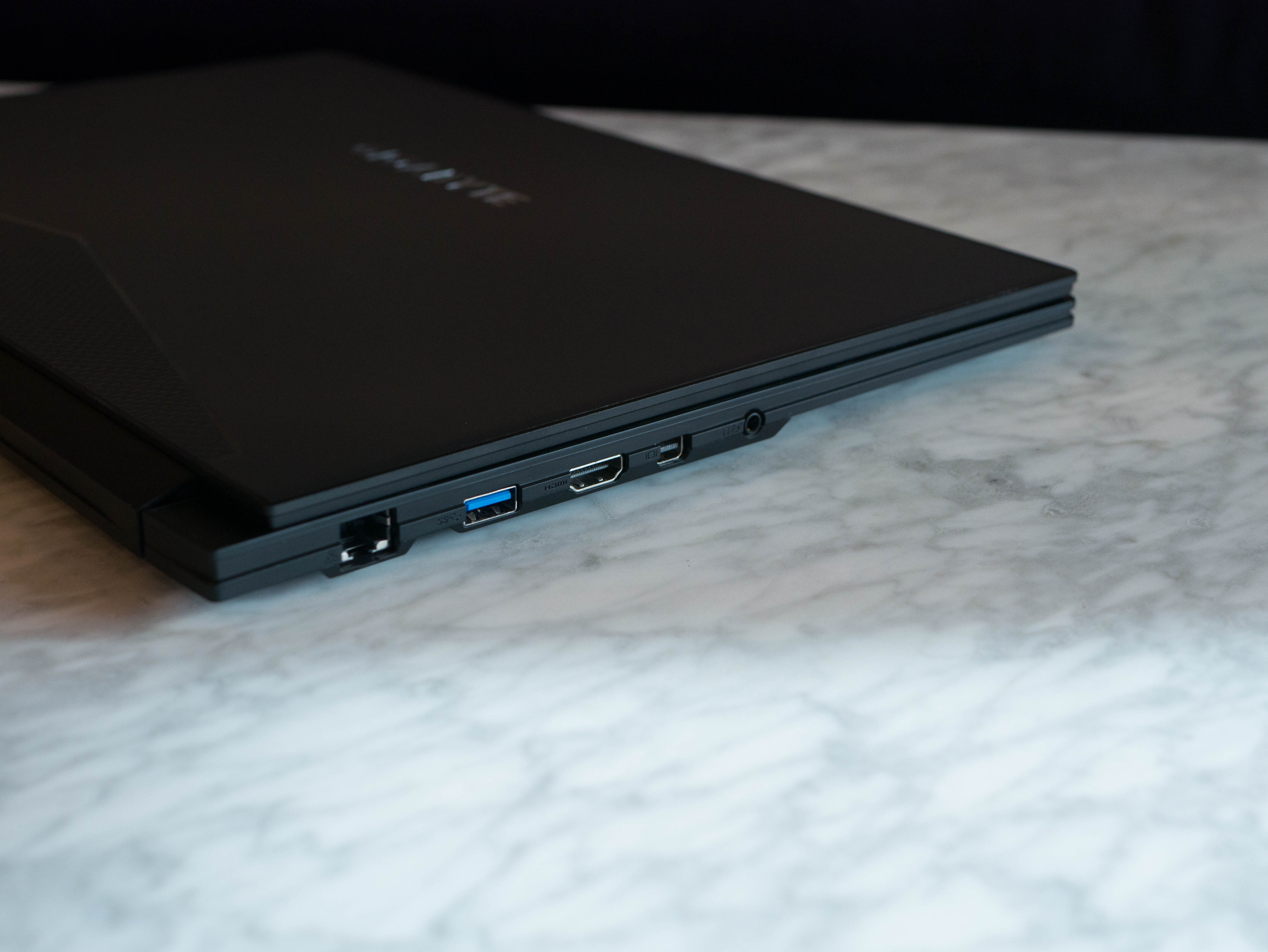
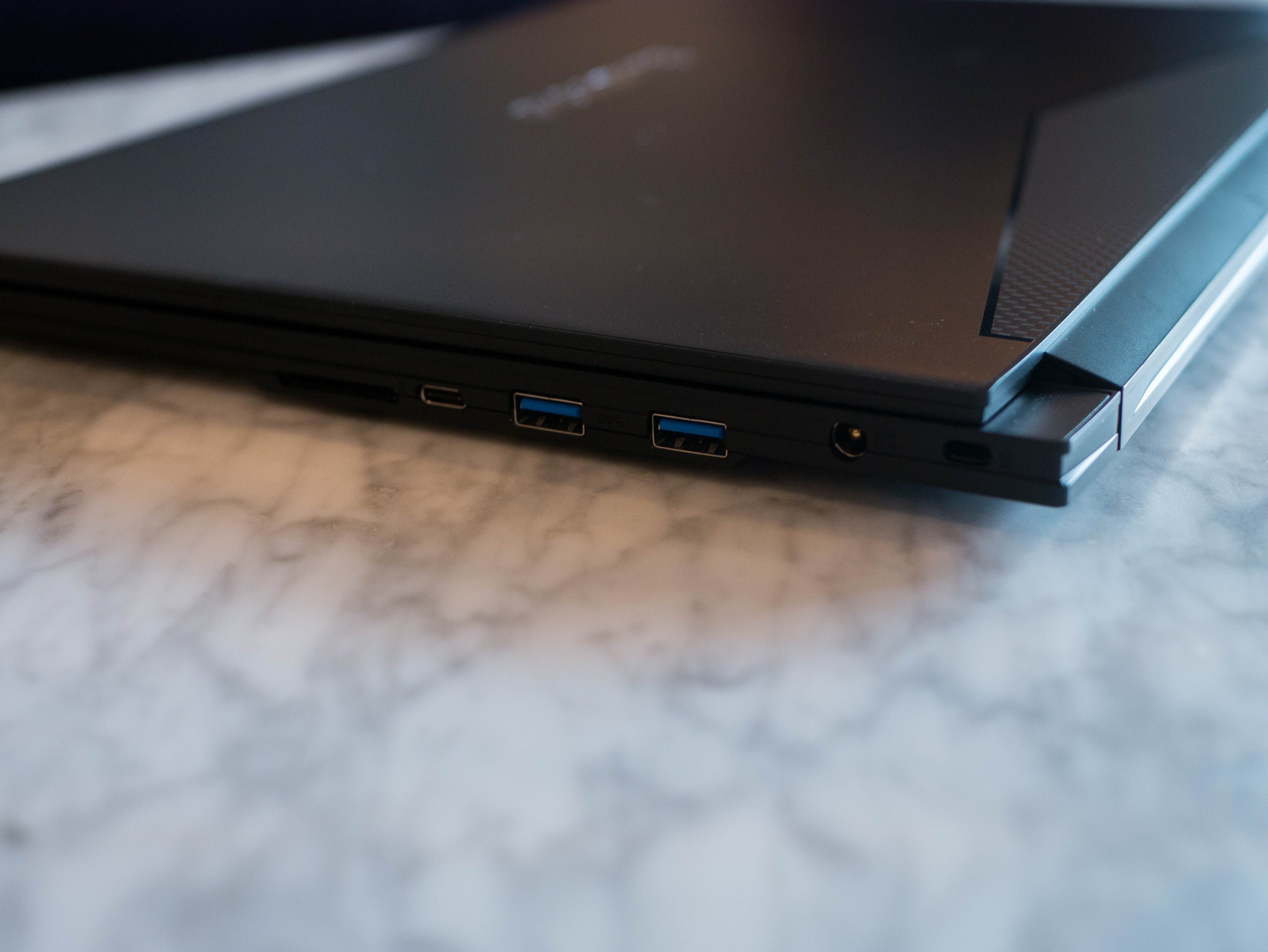
Starting from the left edge, the I/O ports include an Ethernet port, a USB 3.0 port, an HDMI 2.0 port, a mini-DisplayPort, and a combination audio jack. On the right, you'll find an SD card reader, Thunderbolt 3 over USB Type-C, two more USB 3.0 ports, the DC power jack, and a Kensington cable-lock notch.
The Gigabyte Aero 15X's build quality and appearance are impressive overall. The thin bezels provide a unique look that sets the laptop apart from its competitors. However, some gamers might want a system that turns heads; the Aero 15X won't achieve this, but it'll definitely please gamers looking for subtle details.
Display
In between the Aero 15X's impressively thin bezel is a 15.6" Full HD (1920x1080) IPS display with an anti-glare surface. Additionally, the HDMI, mini DisplayPort, and Thunderbolt 3 over Type-C ports allow users to connect additional displays. To supplement your graphical performance, the TB 3 over Type-C also allows you to connect an external GPU dock.
Input Devices
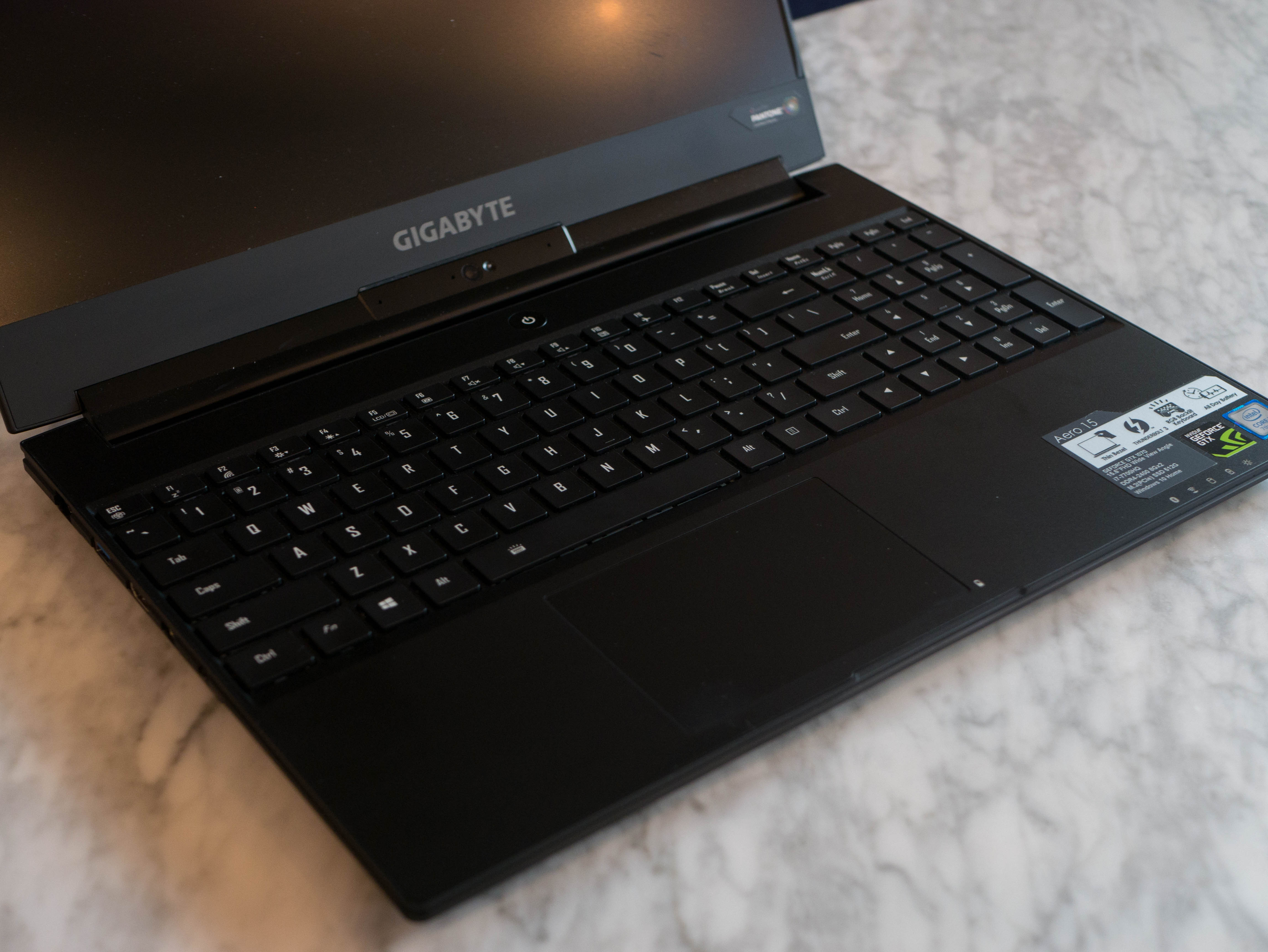
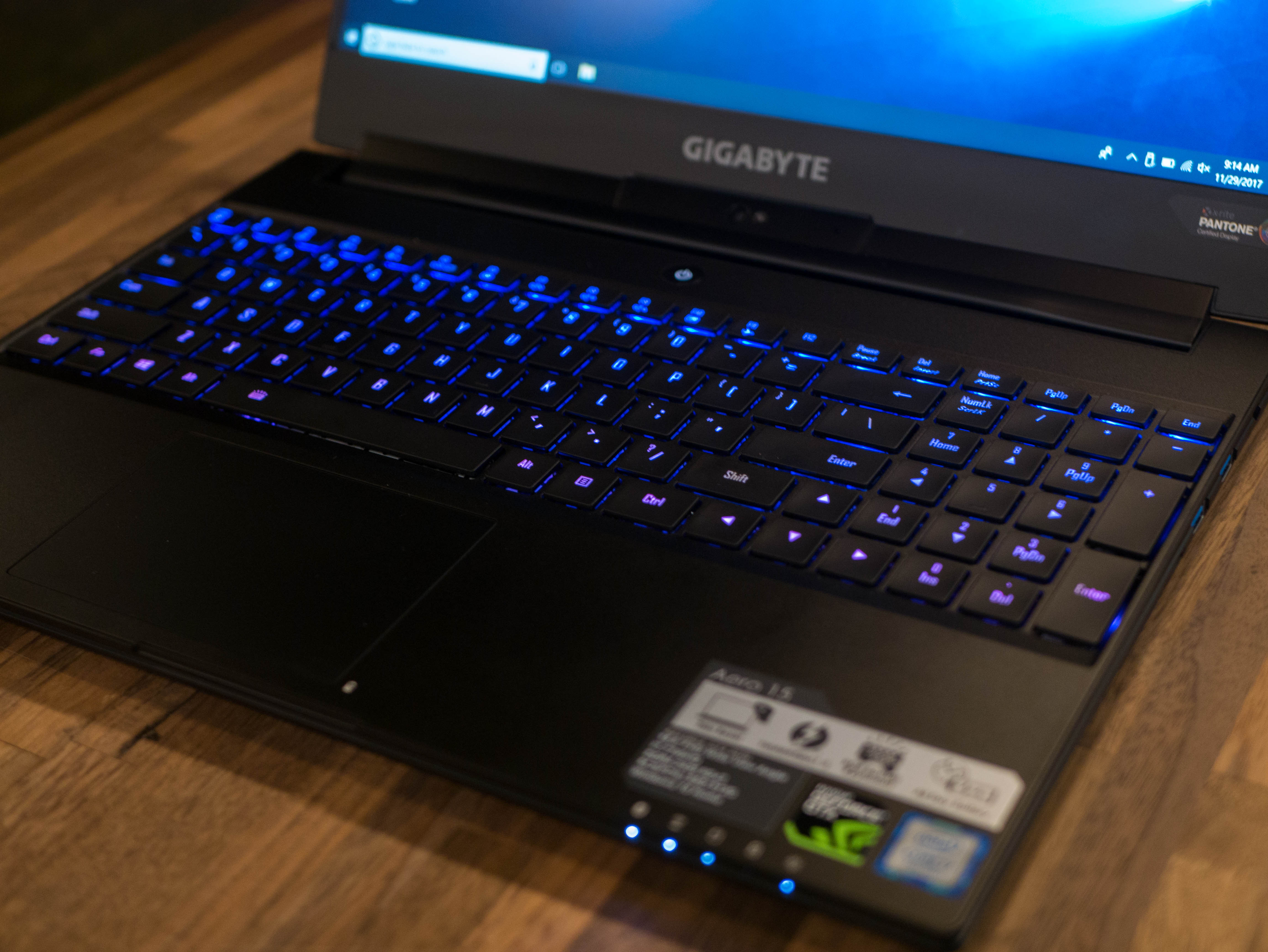
Squeezed between the interior bezels is a full-length keyboard with a number pad. The keys are adequately spaced, and the keycaps have a slight concave sculpt, providing a comfortable typing experience. The keycaps feature a translucent white font that allows LED backlighting to shine through with minimal backlight bleeding.
The function row has the following functions: Esc maximizes fan speed, F1 puts the laptop to sleep, F2 toggles wireless functionality, F3 and F4 adjust display brightness, F5 opens the project menu, F6 turns the display on and off, F7 through F9 adjust the volume, F10 toggles touchpad functionality, and F11 toggles airplane mode. Additionally, Fn+Spacebar adjusts the keyboard's backlight levels.
The Aero 15X has one of the more satisfying and accurate touchpads we've seen in a gaming laptop. The surface is smooth and comfortable to use; you can almost describe it as friction-less. By comparison, many gaming laptops have a slight amount of surface drag and jerky tracking, which detracts from the overall experience.
However, the touchpad isn't perfect. It has uneven clicking distance; the top half and middle of the touchpad have a shallow travel distance, whereas the bottom half sinks much further. For this reason, the touchpad won't replace a good mouse, but it'll serve you fine when you use the laptop on the go.
Interior
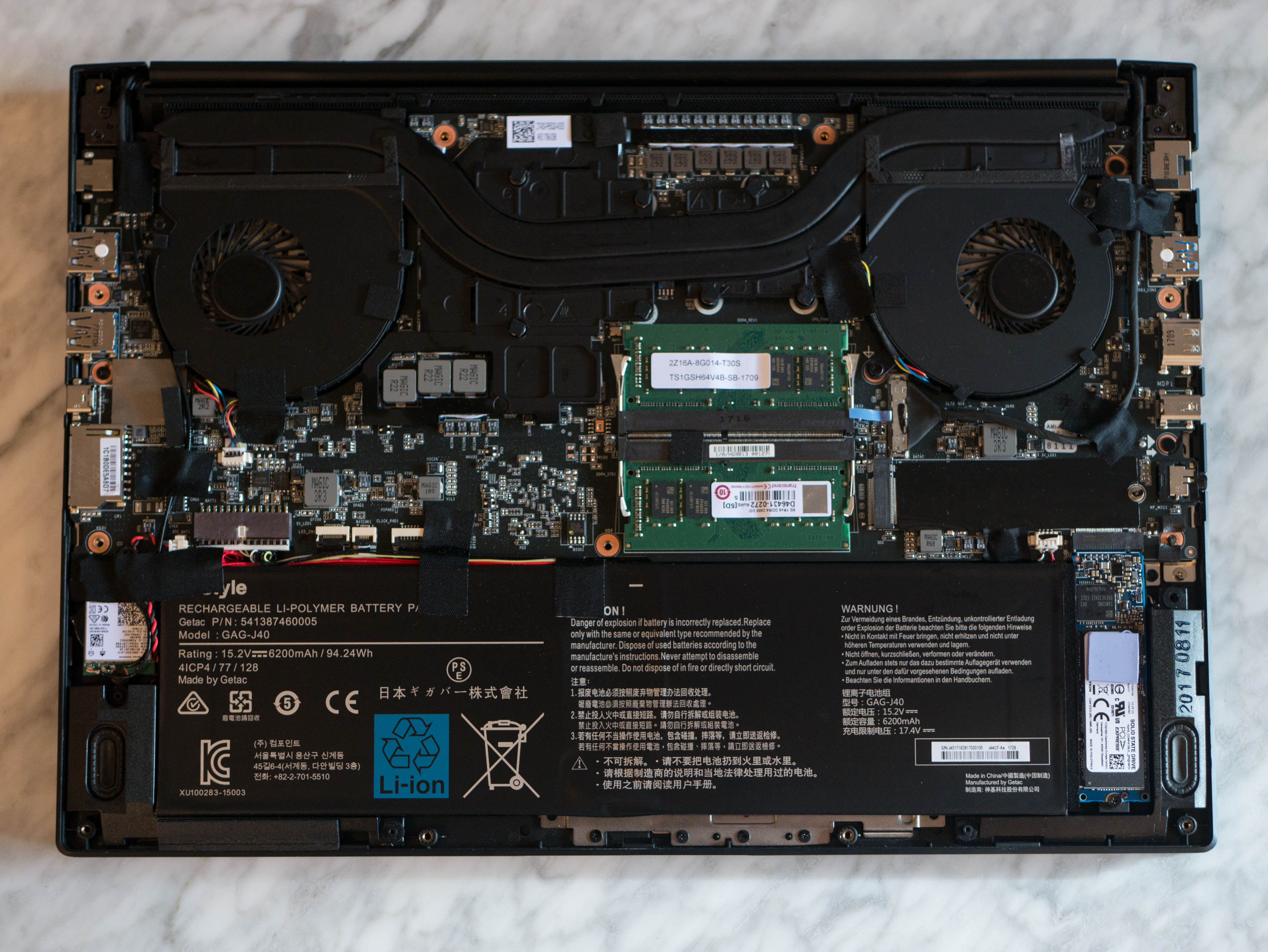
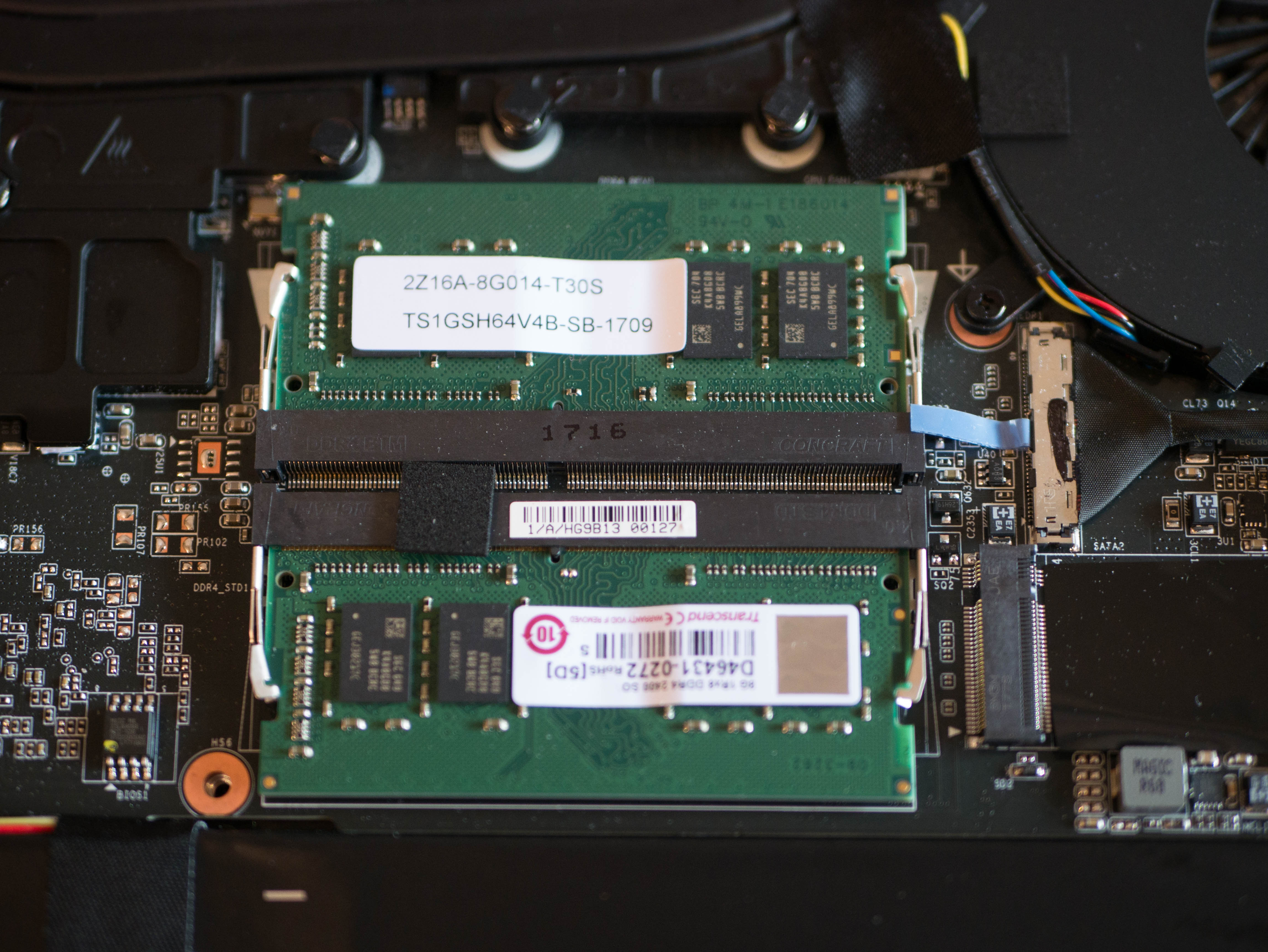
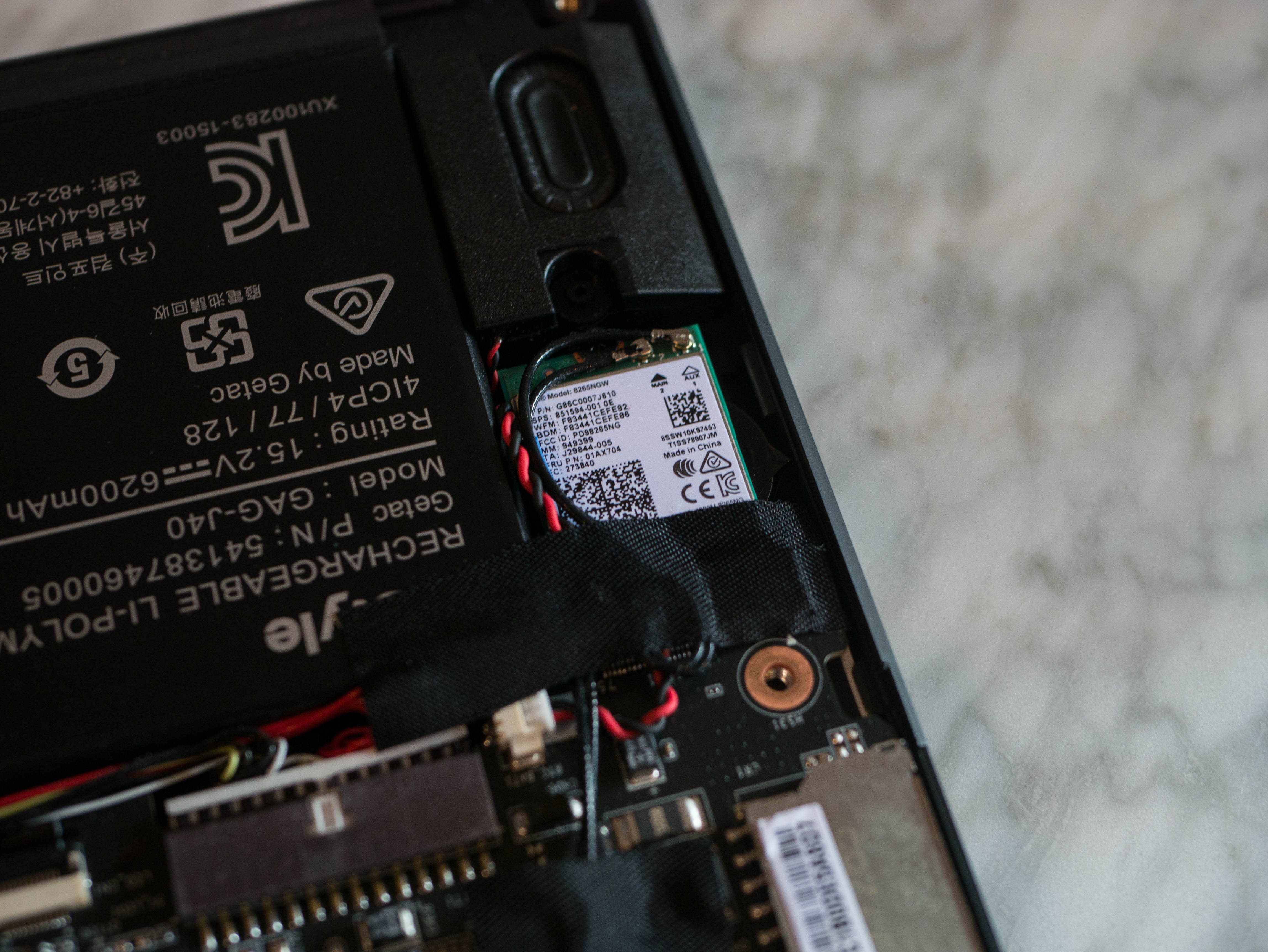
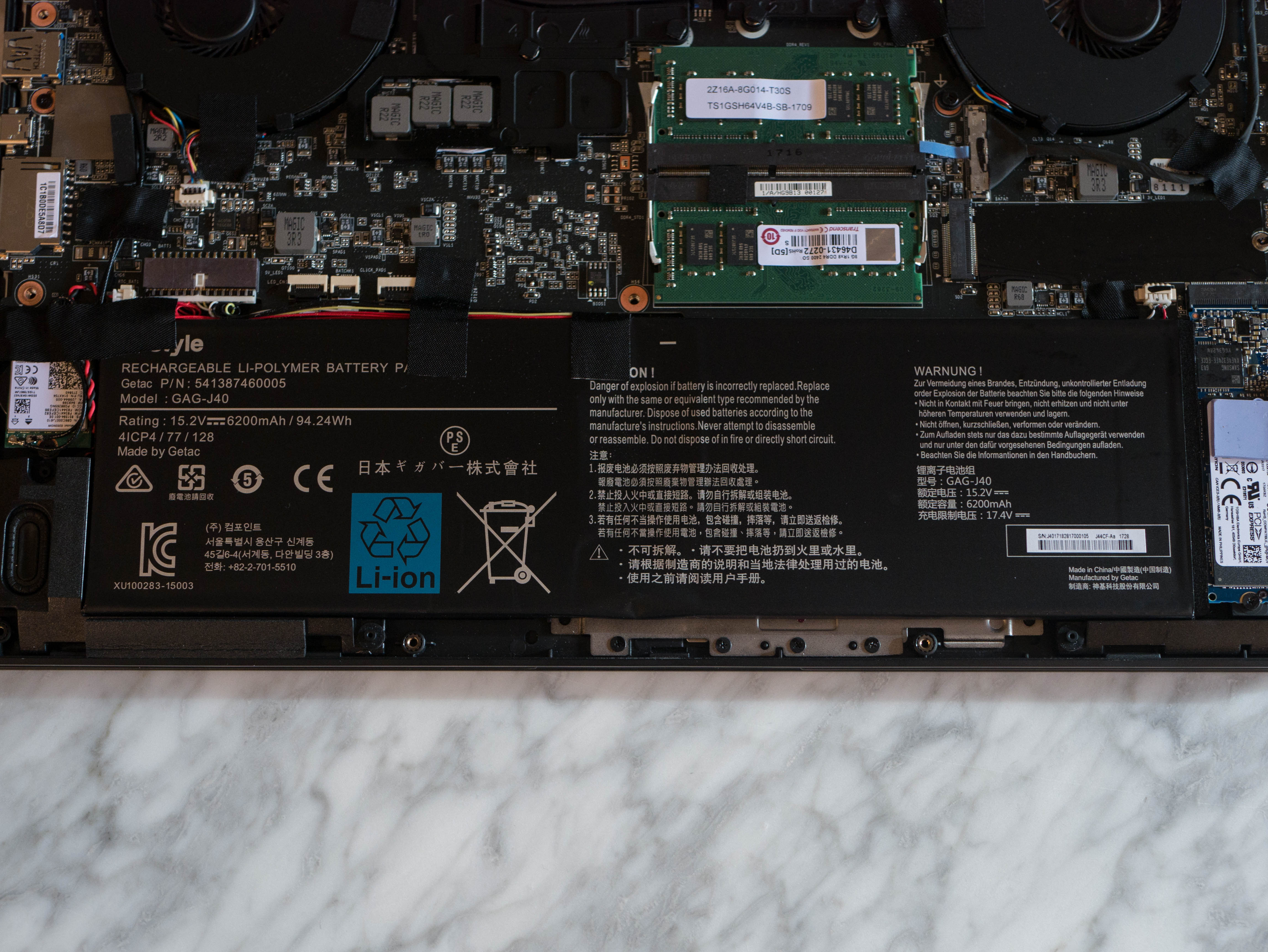
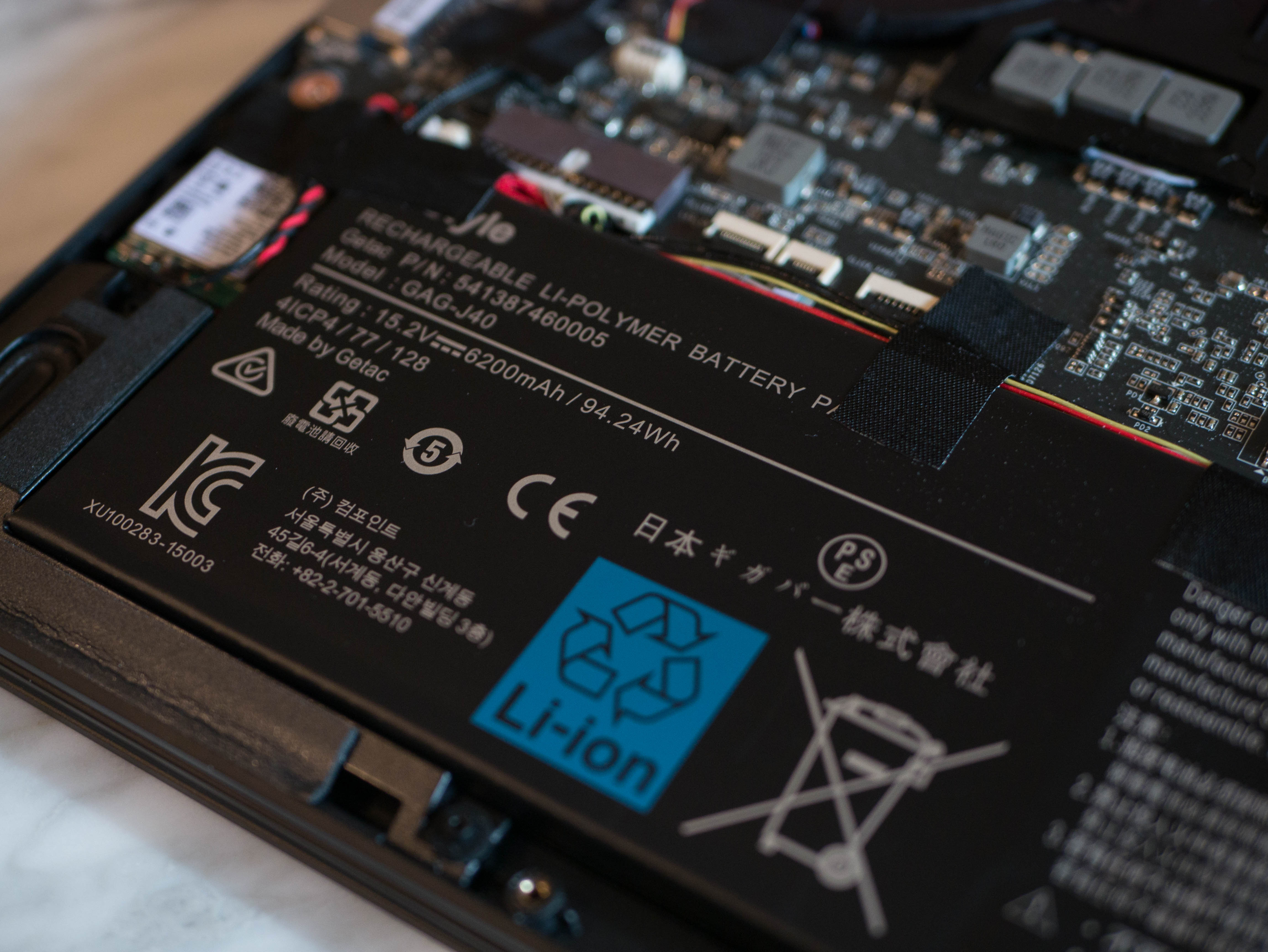
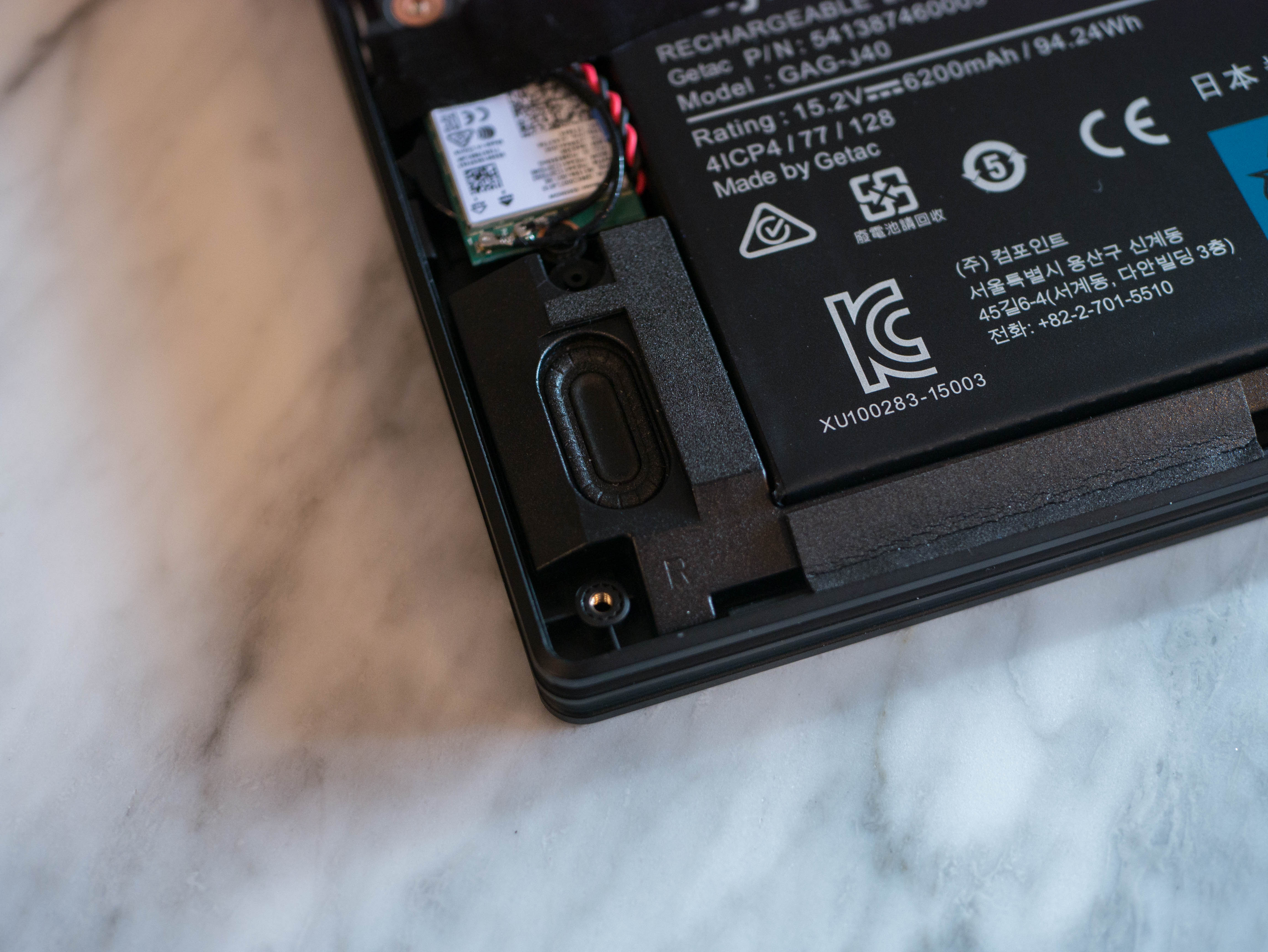

The bottom panel is secured to the laptop with 11 Torx-head screws, making the interior inaccessible unless you have the right tools. Once the screws are removed, the panel pops off easily. In the center, you'll find two DDR4 memory slots; our configuration contained 16GB of RAM. You'll find an Intel Dual Band Wireless-AC 8265, which handles the laptop's Wi-Fi and Bluetooth functionality. On the opposite corner, you'll find an M.2 slot. The large 94.24Whr lithium-ion battery spans nearly the entire width of the front edge.
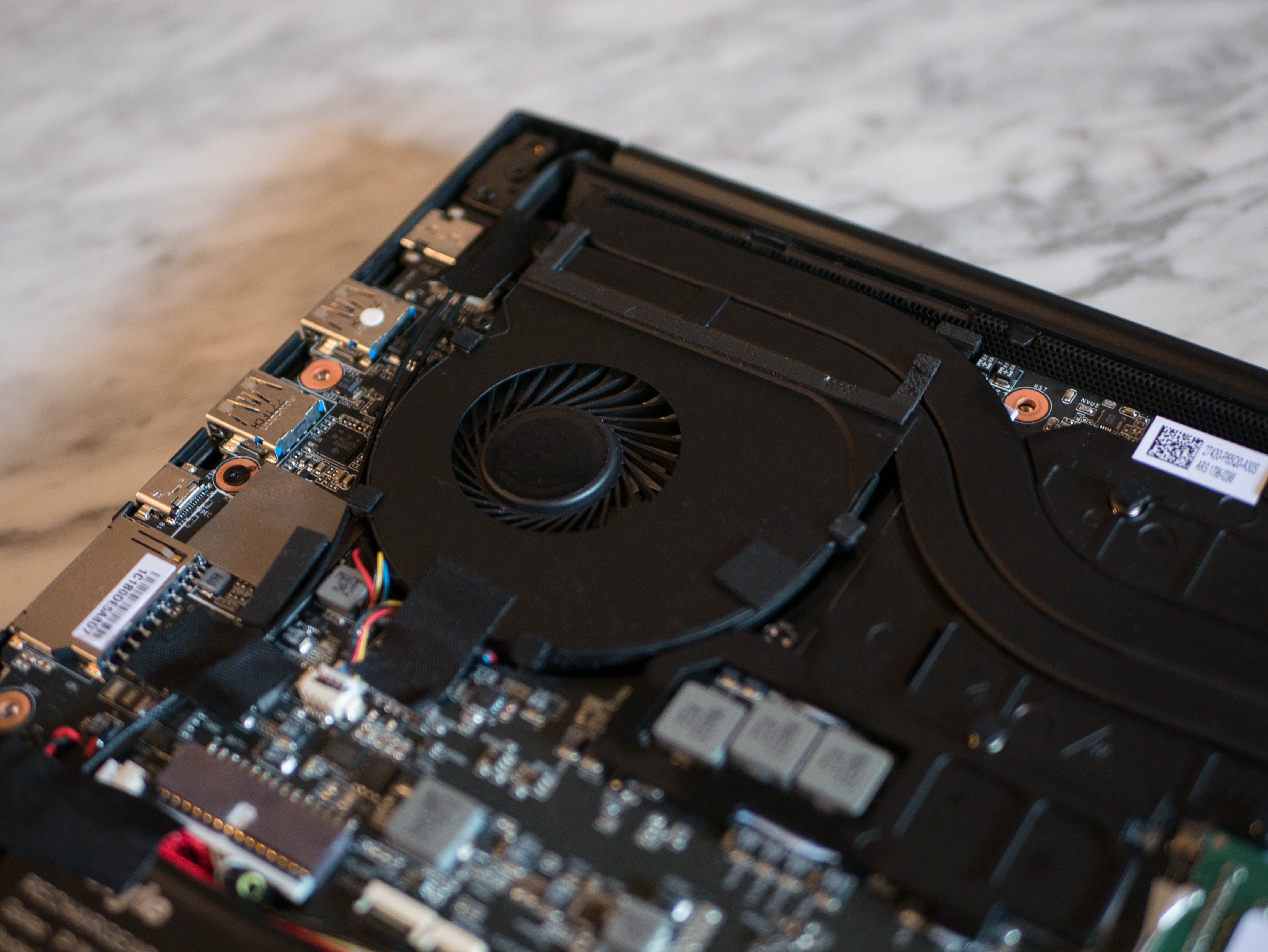
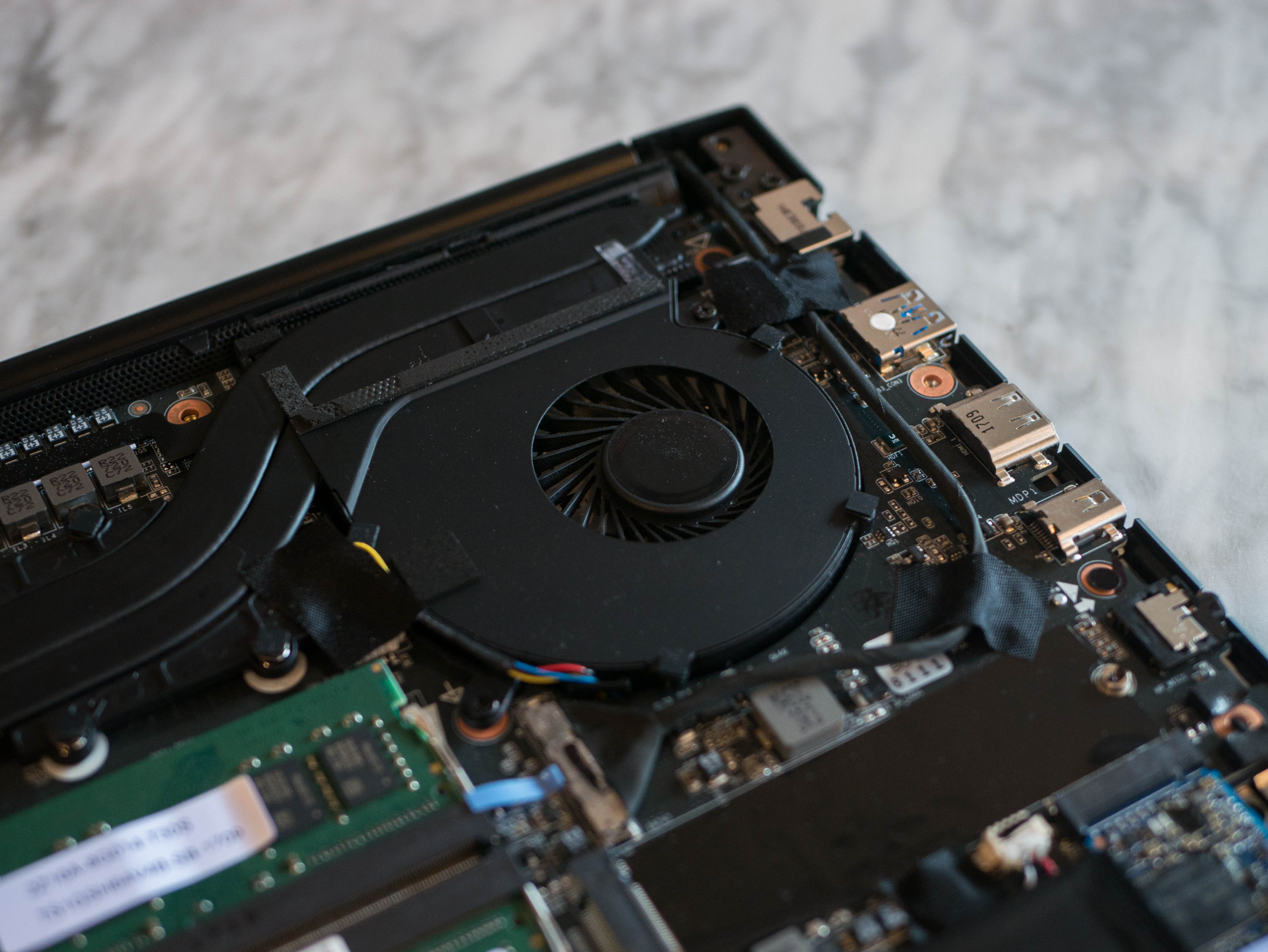
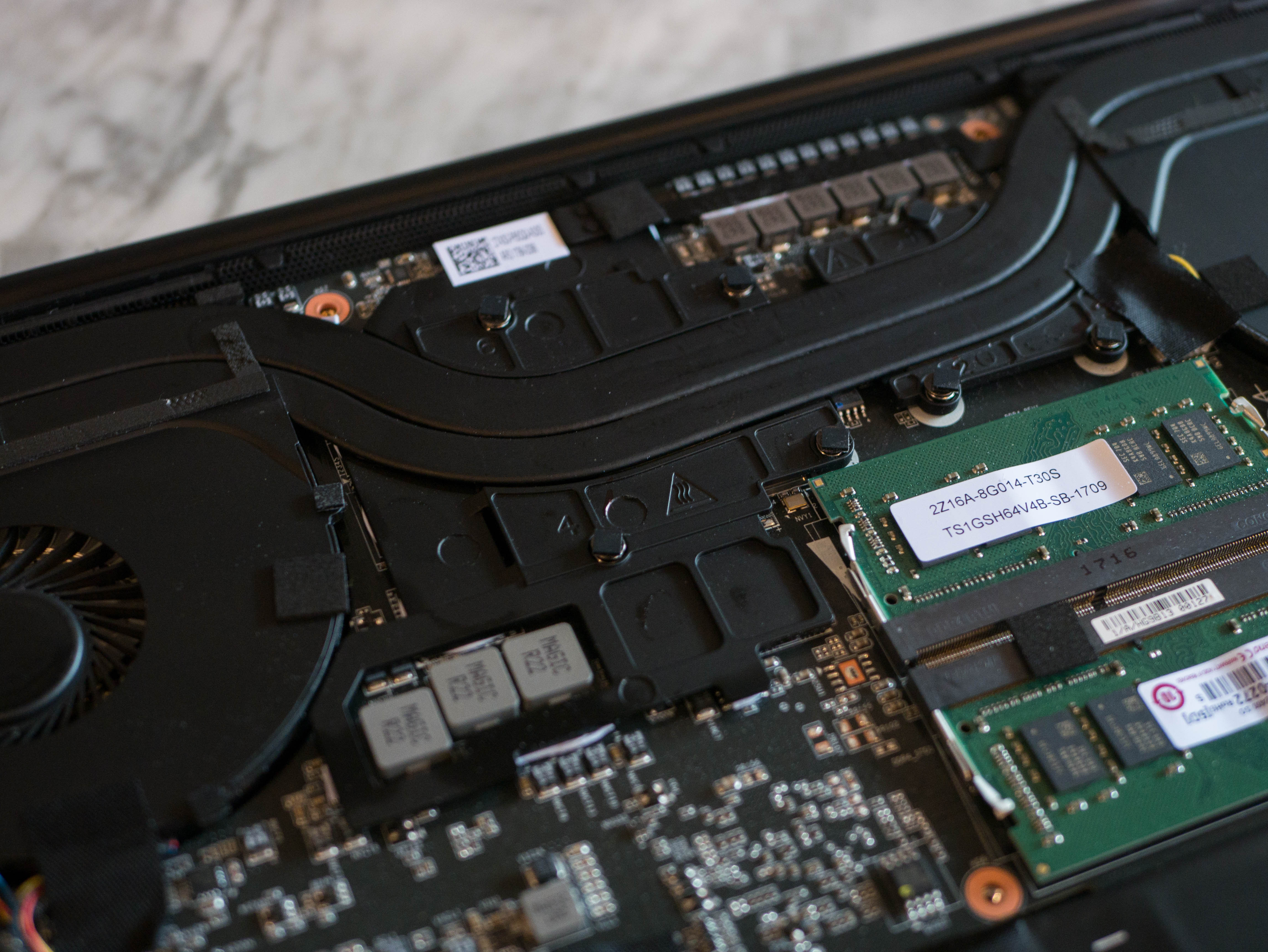
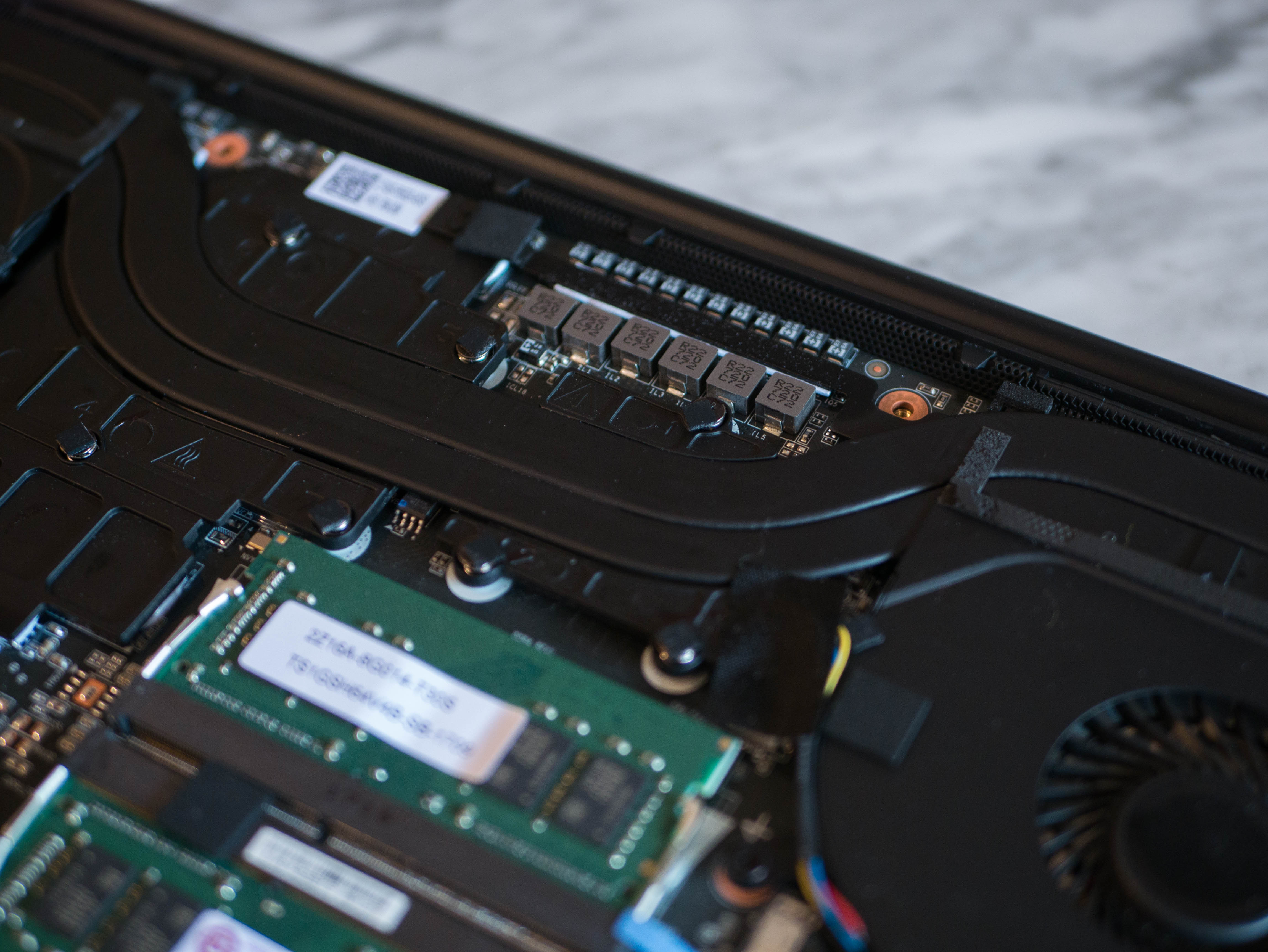
The cooling solution spans the rear end of the Aero 15X. It features two fans for the CPU and GPU. Two large heat pipes run from each fan and pass over the CPU and GPU heat sinks.
MORE: Best Gaming Laptops
MORE: Gaming Laptop Previews
MORE: All Laptop Content
